As this is a curated collection of books from a personal library, please be mindful that some books may be out of print, have more current editions, or be available in digital formats. A large portion of the books presented are related to research and reference. It is wise to seek an attorney and not solely rely on the material noted here.
Legal and Cybersecurity Regulations
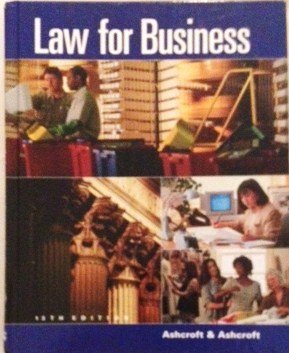
This book is a practical approach to law that emphasizes current and relevant topics for business transactions. The basic business law concepts are covered without the excessive theory that often makes the law seem incomprehensible. The substantial breath of this text, laden with examples and cases, is an effective introduction to a variety of legal topics.There is a more current edition available.This is a textbook.
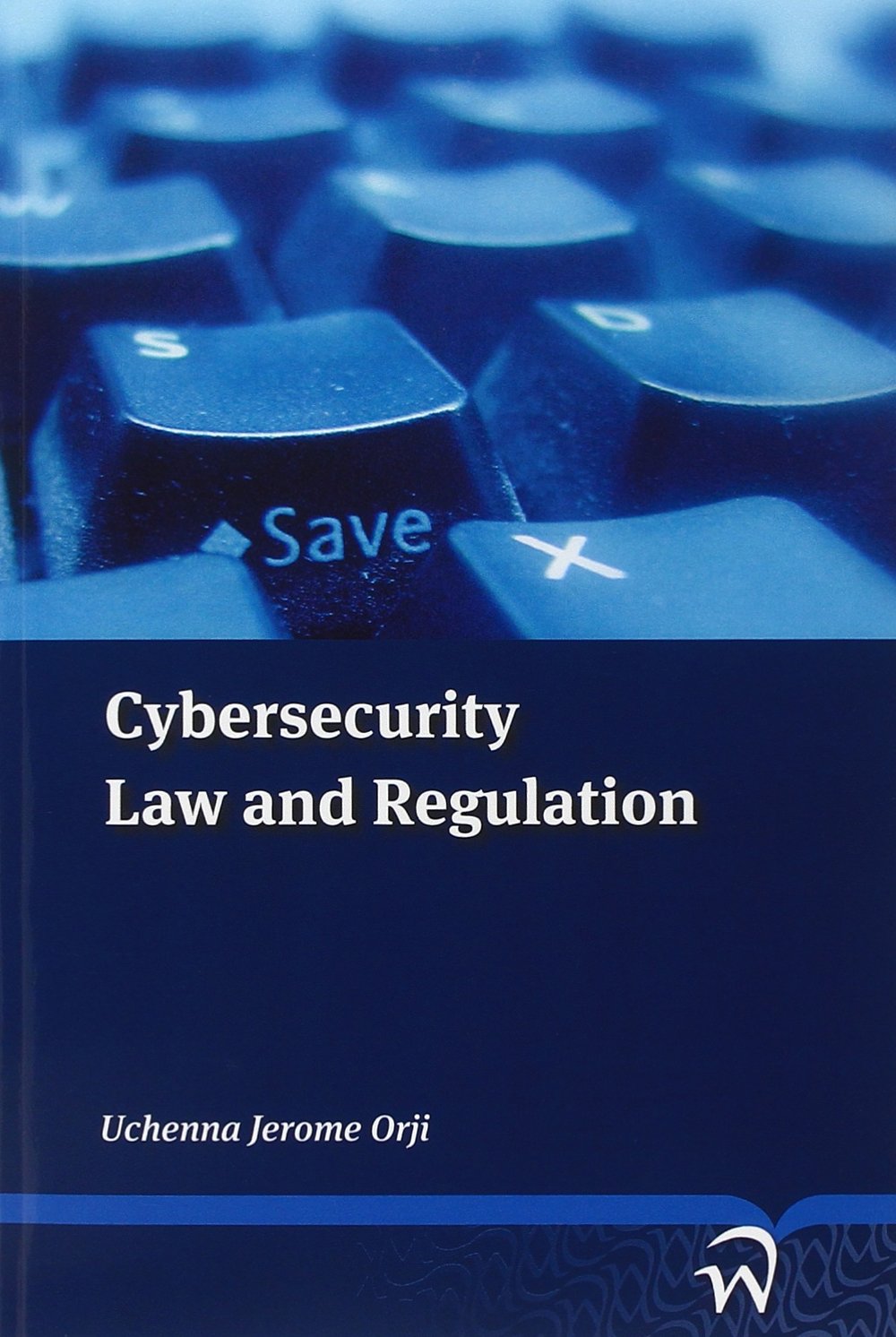
This book discusses the legal and regulatory aspects of cybersecurity, examining the international, regional, and national regulatory responses to cybersecurity. The book particularly examines the response of the United Nations and several international organizations to cybersecurity. It provides an analysis of the Council of Europe Convention on Cybercrime, the Commonwealth Model Law on Computer and Computer Related Crime, the Draft International Convention to Enhance Protection from Cybercrime and Terrorism, and the Draft Code on Peace and Security in Cyberspace. The book further examines policy and regulatory responses to cybersecurity in the US, the UK, Singapore, India, China, and Russia. It also looks at the African Union's regulatory response to cybersecurity and renders an analysis of the Draft African Union Convention on the Establishment of a Credible Legal Framework for Cybersecurity in Africa. The book considers the development of cybersecurity initiatives by the Economic Community of West African States, the Southern African Development Community, and the East African Community, and further provides an analysis of national responses to cybersecurity in South Africa, Botswana, Mauritius, Senegal, Kenya, Ghana, and Nigeria. It also examines efforts to develop policy and regulatory frameworks for cybersecurity in 16 other African countries (Algeria, Angola, Cameroon, Egypt, Ethiopia, Gambia Lesotho, Morocco, Namibia, Niger, Seychelles, Swaziland, Tanzania, Tunisia, Uganda, and Zambia). Nigeria is used as a case study to examine the peculiar causes of cyber-insecurity and the challenges that hinder the regulation of cybersecurity in African states, as well as the implications of poor cybersecurity governance on national security, economic development, international relations, human security, and human rights. The book suggests several policy and regulatory strategies to enhance cybersecurity in Africa and the global information society with emphasis on the collective responsibility of all states in preventing trans-boundary cyber harm and promoting global cybersecurity. It will be useful to policy makers, regulators, researchers, lawyers, IT professionals, law students, and any person interested in seeking a general understanding of cybersecurity governance in developed and developing countries.Out of Print.
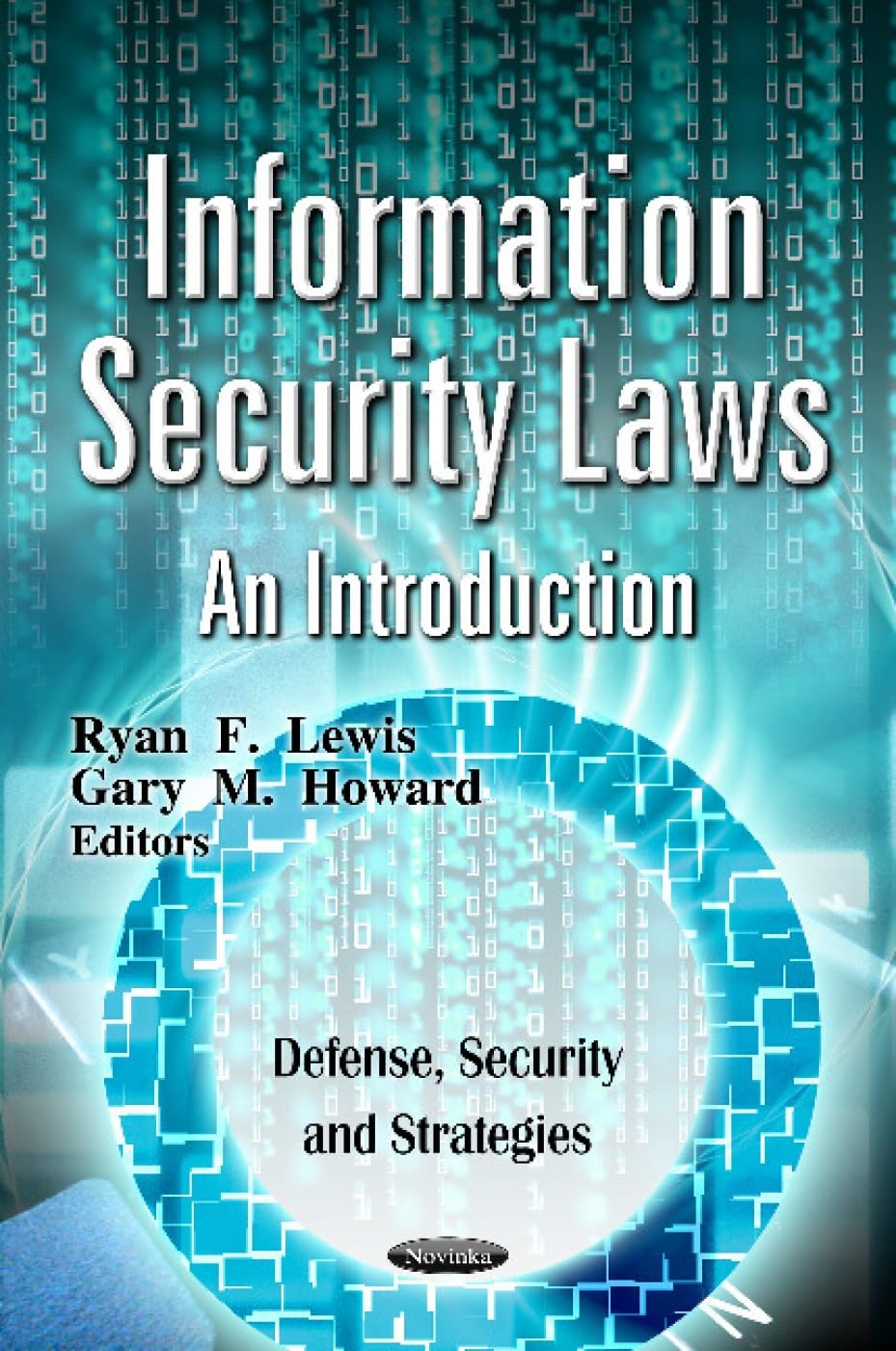
This book describes information security and data breach notification requirements included in the Privacy Act, the Federal Information Security Management Act, Office of Management and Budget Guidance, the Veterans Affairs Information Security Act, the Health Insurance Portability and Accountability Act, the Health Information Technology for Economic and Clinical Health Act, the Gramm-Leach-Bliley Act, the Federal Trade Commission Act, and the Fair Credit Reporting Act. Also included in this book is a brief summary of the Payment Card Industry Data Security Standard (PCI DSS), an industry regulation developed by VISA, MasterCard, and other bank card distributors.
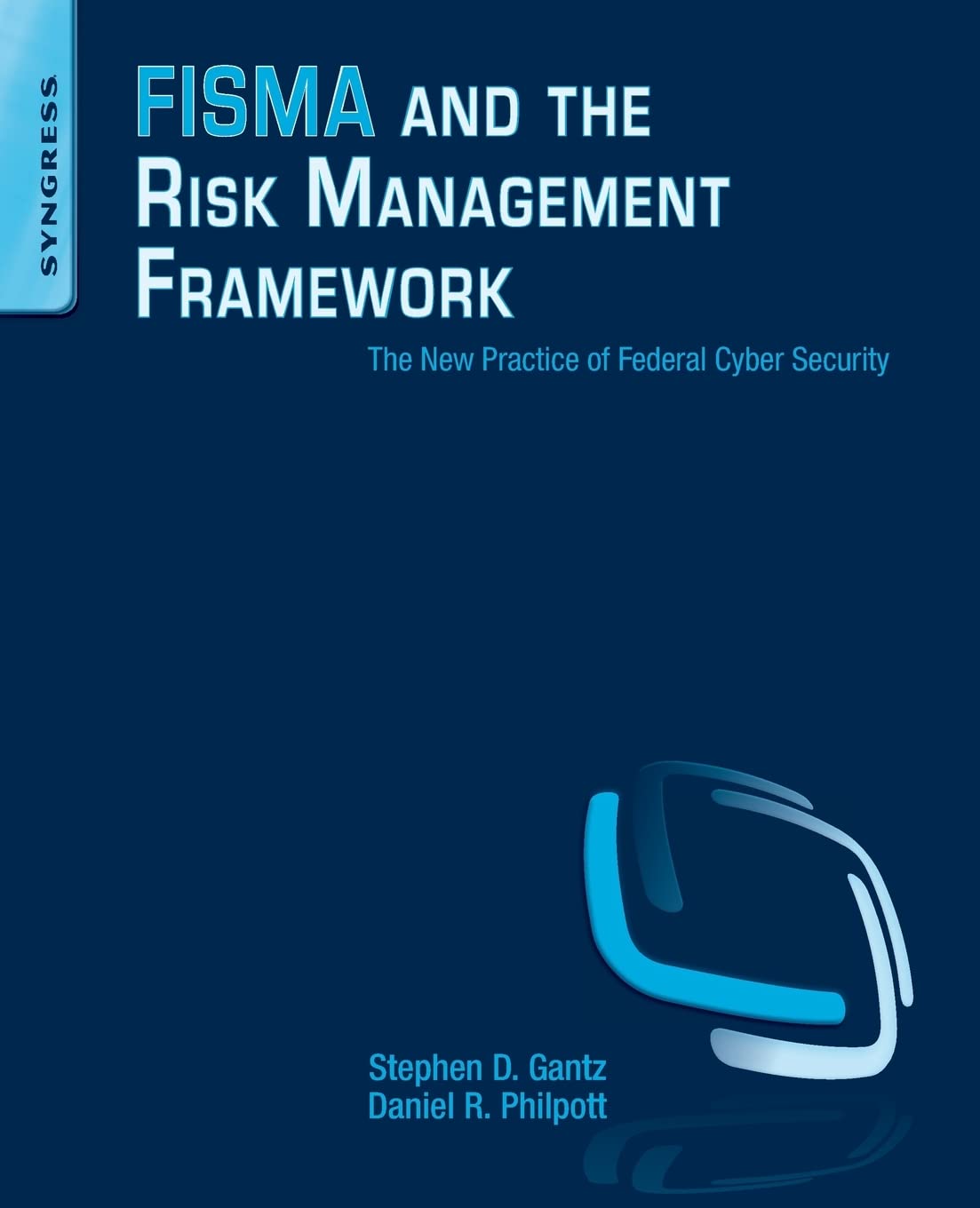
FISMA and the Risk Management Framework: The New Practice of Federal Cyber Security deals with the Federal Information Security Management Act (FISMA), a law that provides the framework for securing information systems and managing risk associated with information resources in federal government agencies. Comprised of 17 chapters, the book explains the FISMA legislation and its provisions, strengths and limitations, as well as the expectations and obligations of federal agencies subject to FISMA. It also discusses the processes and activities necessary to implement effective information security management following the passage of FISMA, and it describes the National Institute of Standards and Technology's Risk Management Framework. The book looks at how information assurance, risk management, and information systems security is practiced in federal government agencies; the three primary documents that make up the security authorization package: system security plan, security assessment report, and plan of action and milestones; and federal information security-management requirements and initiatives not explicitly covered by FISMA. This book will be helpful to security officers, risk managers, system owners, IT managers, contractors, consultants, service providers, and others involved in securing, managing, or overseeing federal information systems, as well as the mission functions and business processes supported by those systems. • Learn how to build a robust, near real-time risk management system and comply with FISMA • Discover the changes to FISMA compliance and beyond • Gain your systems the authorization they need
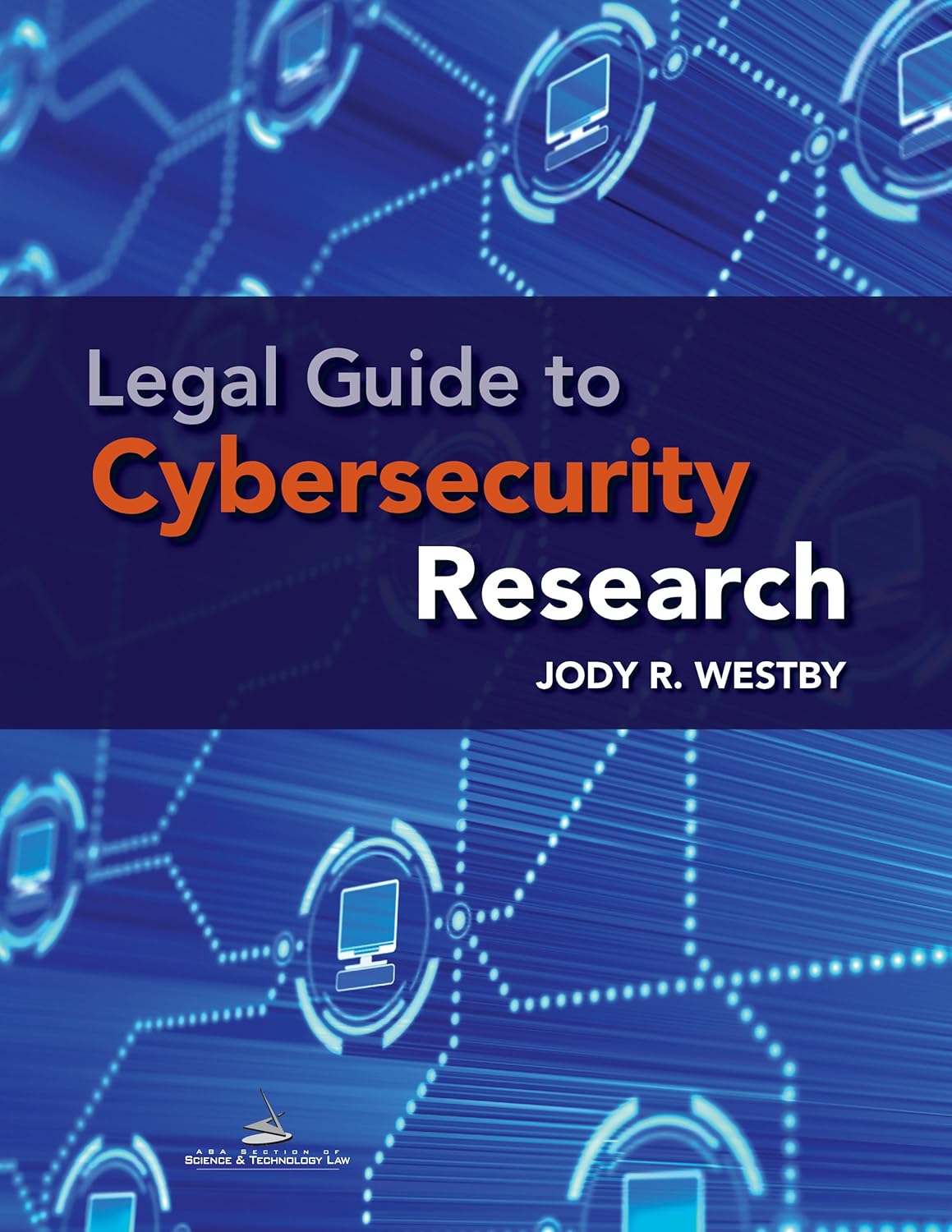
The Legal Guide to Cybersecurity Research contains tools to assist cybersecurity researchers, institutional review boards (IRBs), legal counsel, and others in understanding the legal and policy considerations associated with researchers obtaining and using network communications data in cybersecurity research and development (R&D). The book provides researchers tools that can help analyze legal and policy considerations, and understand possible legal protective measures. These measures may be utilized to better manage risks associated with the use of networks communications datasets in cybersecurity R&D.

Single-member LLCs are the business entity of choice for small businesses with one owner. With an SMLLC, you get personal liability protection, pass-through taxation, and flexibility of management.Nolo’s Guide to Single-Member LLCs has all the essential information you need to decide whether an SMLLC is the right choice for your business. It explains: • how to form an SMLLC and why it can be a good business entity choice • the attractive features of an SMLLC, such as pass-through taxation, personal liability protection, and flexibility of management • how to choose the proper tax treatment for your SMLLC • the tasks involved in running your SMLLC, like paying taxes, filing annual reports, and keeping proper records.This edition explains the Tax Cuts and Jobs Act, most importantly the 20% pass-through deduction available to SMLLC owners.David M. Steingold is a Nolo author and a Michigan attorney. His practice covers multiple areas, including business law.
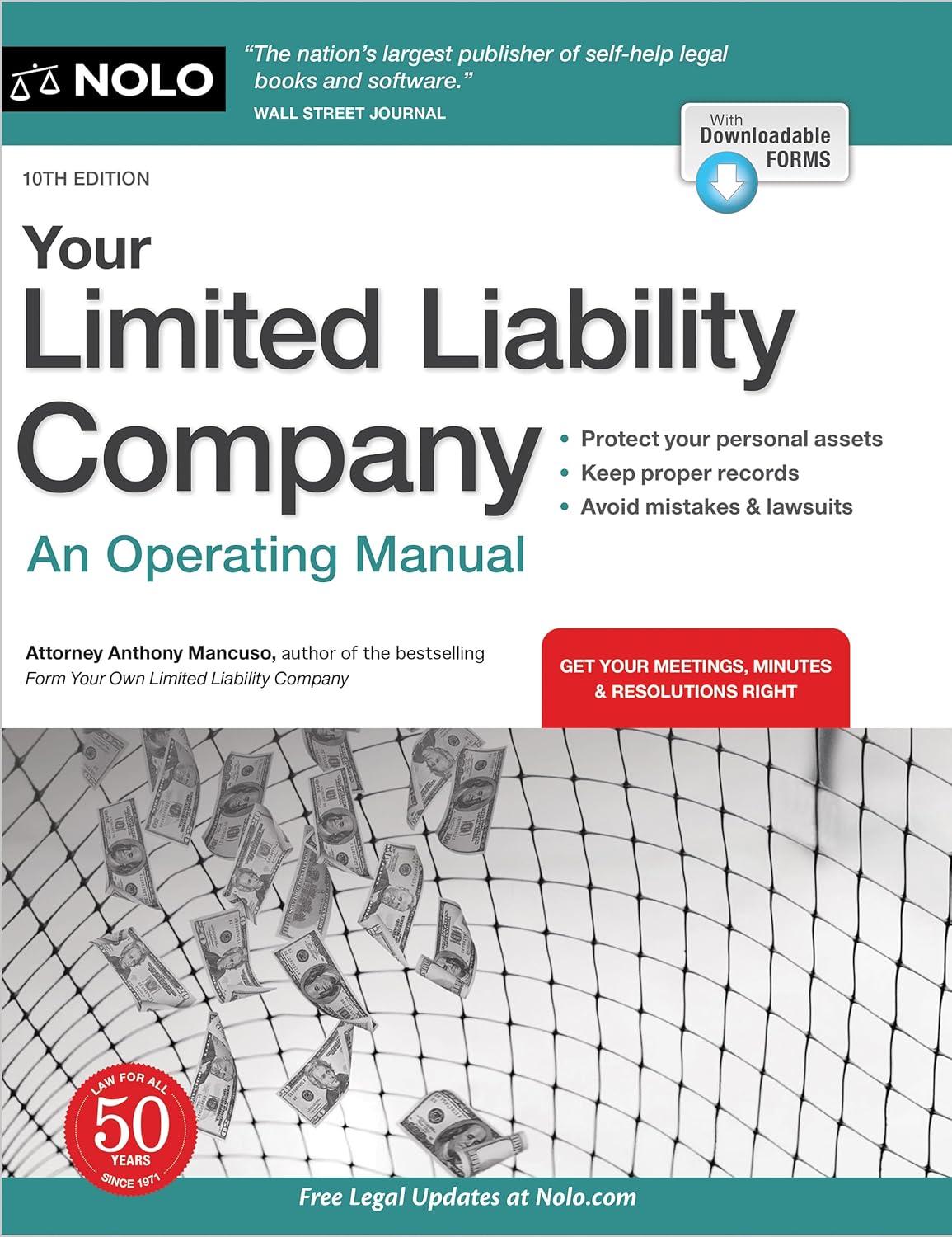
Running your LLC, step by stepA limited liability company can give your small business both tax benefits and protection from personal liability for business debts. But without careful record keeping, regular meetings, and formal minutes, you could lose these advantages.Your Limited Liability Company provides all the instructions and forms you need to maintain the legal validity of your LLC. Forms include: • Minutes of LLC Meeting • Waiver of Notice of Meeting • Approval of LLC Minutes • Written Consents for Single-Member LLCsYou’ll also find more than 50 of the most commonly used legal resolutions to insert in your minutes or written consents. Use them to: • declare distributions of LLC profits to members • hire employees and contract with outside firms • approve LLC contracts • approve salary increases and bonuses • authorize bank loans • elect corporate tax treatment for your LLC, and • amend the articles and operating agreement.With Downloadable Forms Provides 70 minutes and resolution forms with step-by-step instructions on how to document important LLC decisions, votes, and transactions. All forms are included in the book and are available for download.

With the rise of the gig economy, independent contractor arrangements are more common than ever. Whether you’re an independent contractor or a business hiring one to work for you, a written agreement will help to protect your rights, define expectations, and prove that there’s no employer-employee relationship.Included are customizable agreements for independent contractors and freelancers in a multitude of fields, such as sales, accounting, software consulting, and construction. Along with the agreements, you’ll find detailed instructions on how to:• draft a binding agreement• define a project’s scope• preserve confidentiality• distinguish between employees and independent contractors• protect your intellectual property• amend your agreement, and• satisfy IRS requirements.Each chapter has two agreements—one geared towards the independent contractor and one geared towards the business hiring an independent contractor.The 11th edition is completely updated to provide the latest rules and regulations, and gives advice on how to address independent contractors’ potential use of artificial intelligence.

In an increasingly digitized and complex publishing world, writers need to know how to protect themselves against copyright infringement, legal trouble, and unwise concessions to publishers. Still the author’s foremost advocate for copyright protection, fair contracts, and free expression, the Authors Guild has once again partnered with Allworth Press to update this invaluable reference. Thoroughly revised to reflect the many changes in the publishing industry, the fourth edition offers plain-English explanations of legal and business aspects of the trade, from electronic rights and ebooks to contracts and accounting. Other topics include:
- Registering copyrights, including online
- Taxes and bookkeeping
- Following fair use guidelines
- Negotiating contracts with publishers and agents
- Obtaining permissions to use others’ work
- Dealing with periodical, syndication, film, television, play, and audio rights agreements
- Handling business disputes
- Understanding libel, privacy, and the limits of free expression
- Avoiding self-publishing missteps
- Planning authors’ estates
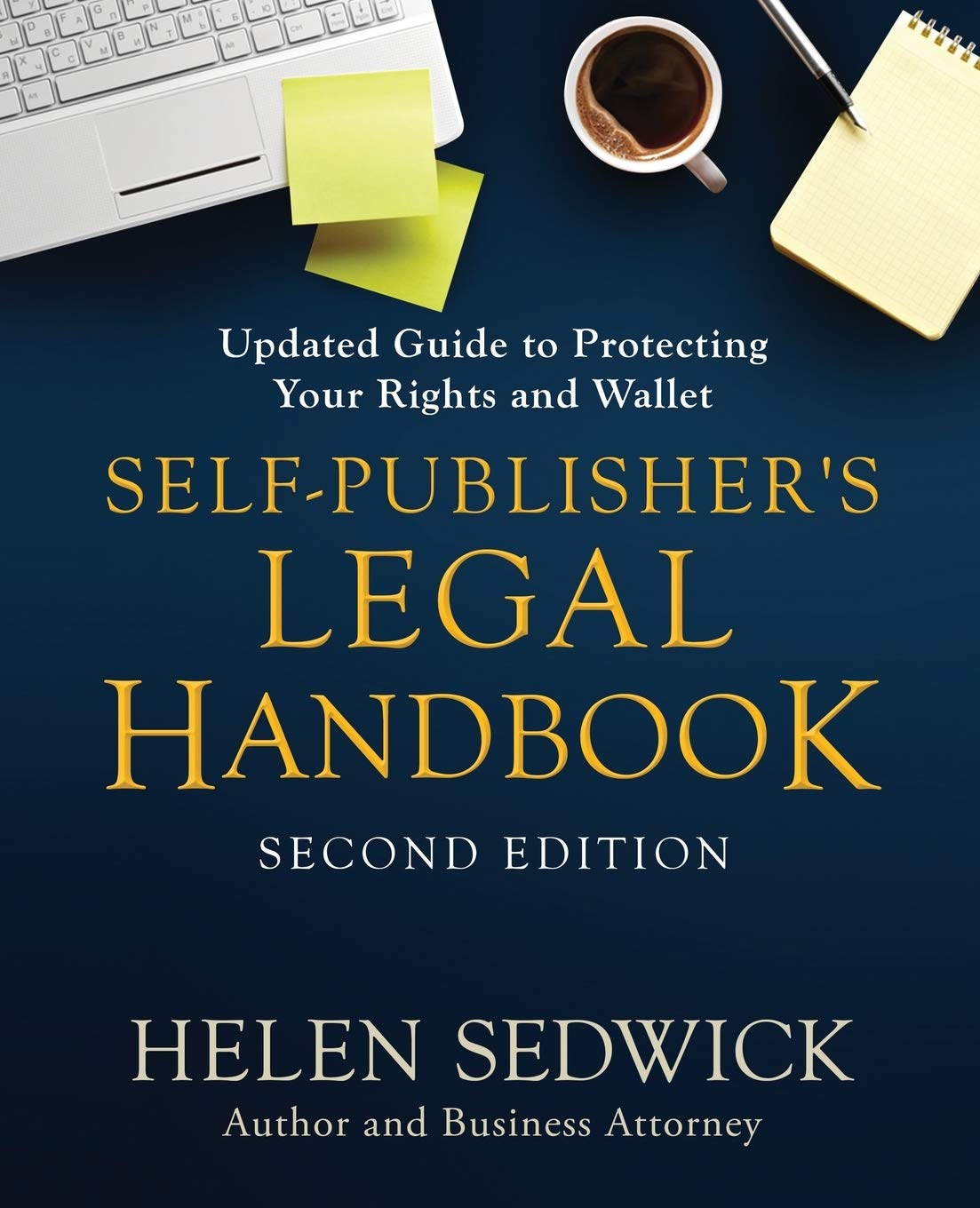
Building on the best-selling success of the original Self-Publisher’s Legal Handbook, Helen Sedwick wrote this expanded second edition to help writers stay out of court and at their desks.Using 30 years of legal experience, Sedwick shows writers how to• Set up their business• Protect their copyright• Avoid infringement• Spot scams• Save on taxesThis second edition covers additional topics including• Choosing a pen name• Using lyrics and images• Fighting content theft• Minimizing defamation and privacy risks• Expanding beyond the bookDon’t lose your copyright by signing a bad contract, or waste money by buying into a scam, or lose sleep by getting sued for defamation. Self-Publisher’s Legal Handbook helps writers navigate the legal aspects of writing and independent publishing.
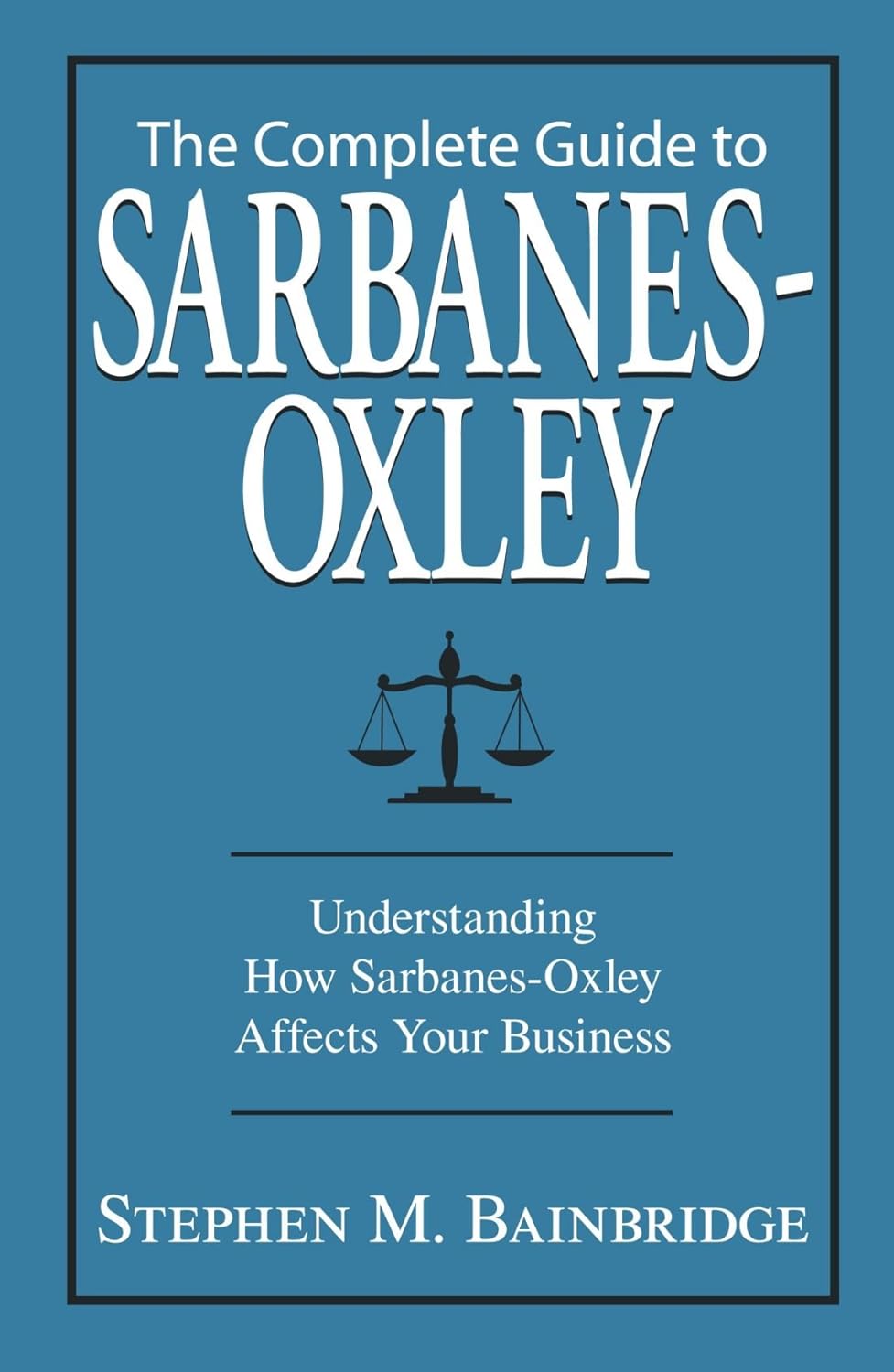
As of the end of 2006, small businesses, which were once exempt, now have to comply with Sarbanes-Oxley (SOX). Under Sarbanes-Oxley, they will now be exposed to audits, reviews and will have to make their profits, losses, and compensation packages public.The Complete Guide to Sarbanes-Oxley will answer the following questions:
- How do companies comply with SOX?
- How does SOX effect relations within the firm?
- Should a public company go private to avoid SOX?
The Complete Guide to Sarbanes-Oxley is a nontechnical, "plain English" guide for the managers and directors of the 13,000 publicly held corporations now subject to SOX. No business owner should be without it!

This book provides an introduction to the key elements of the Sarbanes-Oxley (SOX) legislation which was introduced in the United States in 2002, to improve the governance, controls and financial reporting for companies. It includes a summary of the SOX legislation, an outline of the management certifications required under SOX, a guide to setting up and maintaining a SOX 404 annual compliance framework with advice on planning, testing and reporting. It also provides a guide to testing of IT general controls. This guide also provides handy practical tips to help organizations successfully comply with SOX legislation. This book will be useful to students who are studying accountancy, law, business studies and management. It will also be helpful to risk management personnel, auditors and senior managers tasked with ensuring companies maintain SOX compliance. It will also assist CPAs and external auditors who must carry out audits under the SOX legislation.
Commercial and Government Contract Management

A concise resource for all aspects of contract management in an e-business age, World Class Contracting is organized in a simple, easy-to-follow format, focusing on business partnerships, people, processes, tools and best practices. The book includes a valuable discussion of increasing contract complexity, the need for enterprise contract management processes, and a fair, balanced, and independent review of six of the leading contract management software/systems/tools/applications and how they can help you improve performance.A special feature is the discussion of more than 100 best practices from leading global companies involved in contracting for a wide range of goods and services. The best practices are discussed in each phase of the contract management process.
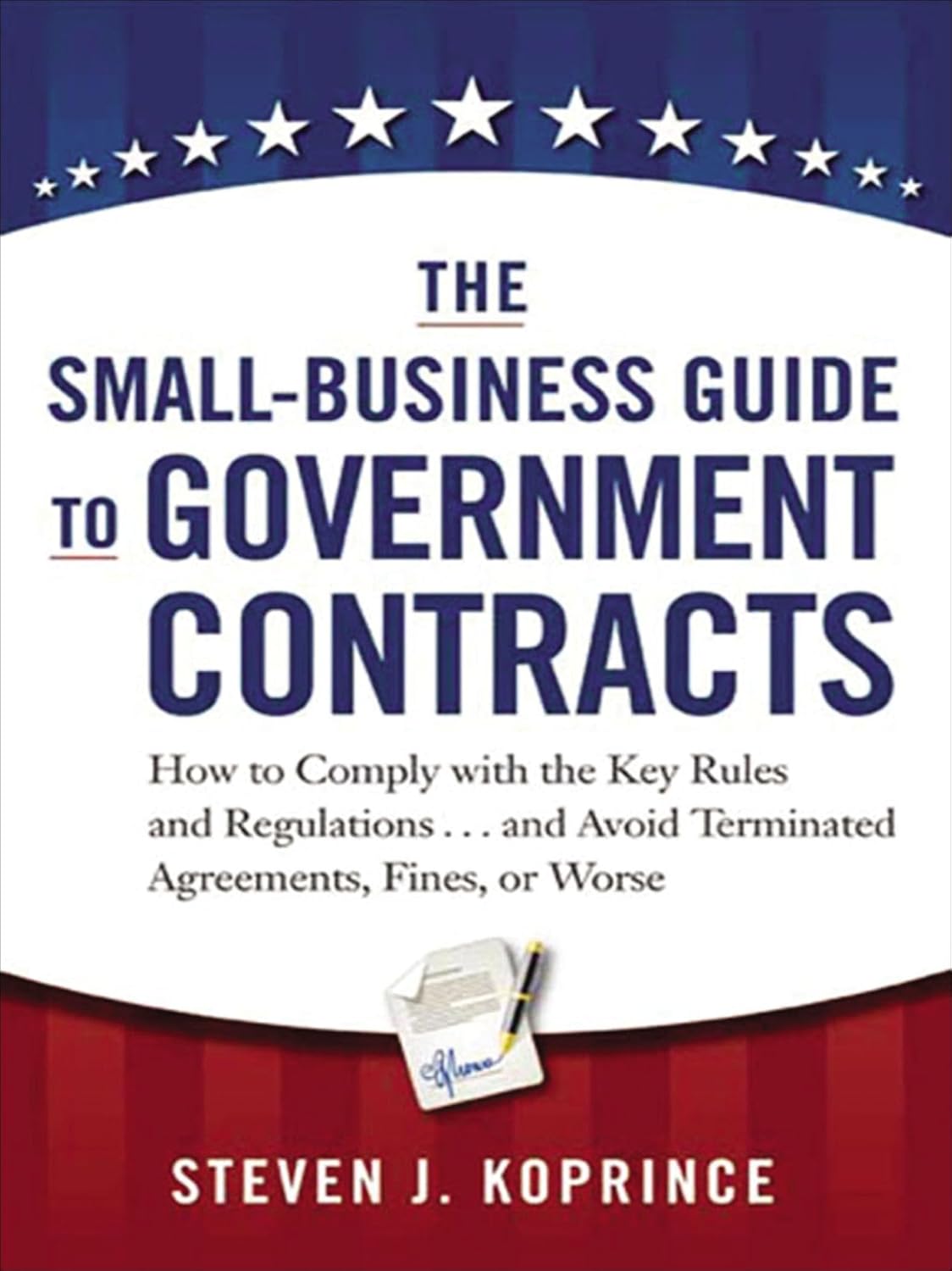
Government law attorney Steven J. Koprince teaches you to concentrate on the crucial but complex Federal Acquisition Regulation (FAR) and other rules required for keeping contracts alive and avoiding penalties.Each year, the federal government awards billions of dollars in small-business contracts. The Small-Business Guide to Government Contracts puts a wealth of specialized legal counsel at readers’ fingertips, answering the most important compliance questions like:
- Is a small business really small?
- Who is eligible for HUBZone, 8(a), SDVO, or WOSB programs?
- What salaries and benefits must be offered?
- What ethical requirements must be followed?
- When does affiliation become a liability?
Small-business contracts are both the lifeblood of hundreds of thousands of companies and a quagmire of red tape. No one can afford to be lax with the rules or too harried to heed them. The Small-Business Guide to Government Contracts empowers contractors to avoid missteps, meet their compliance obligations--and keep the pipeline flowing.
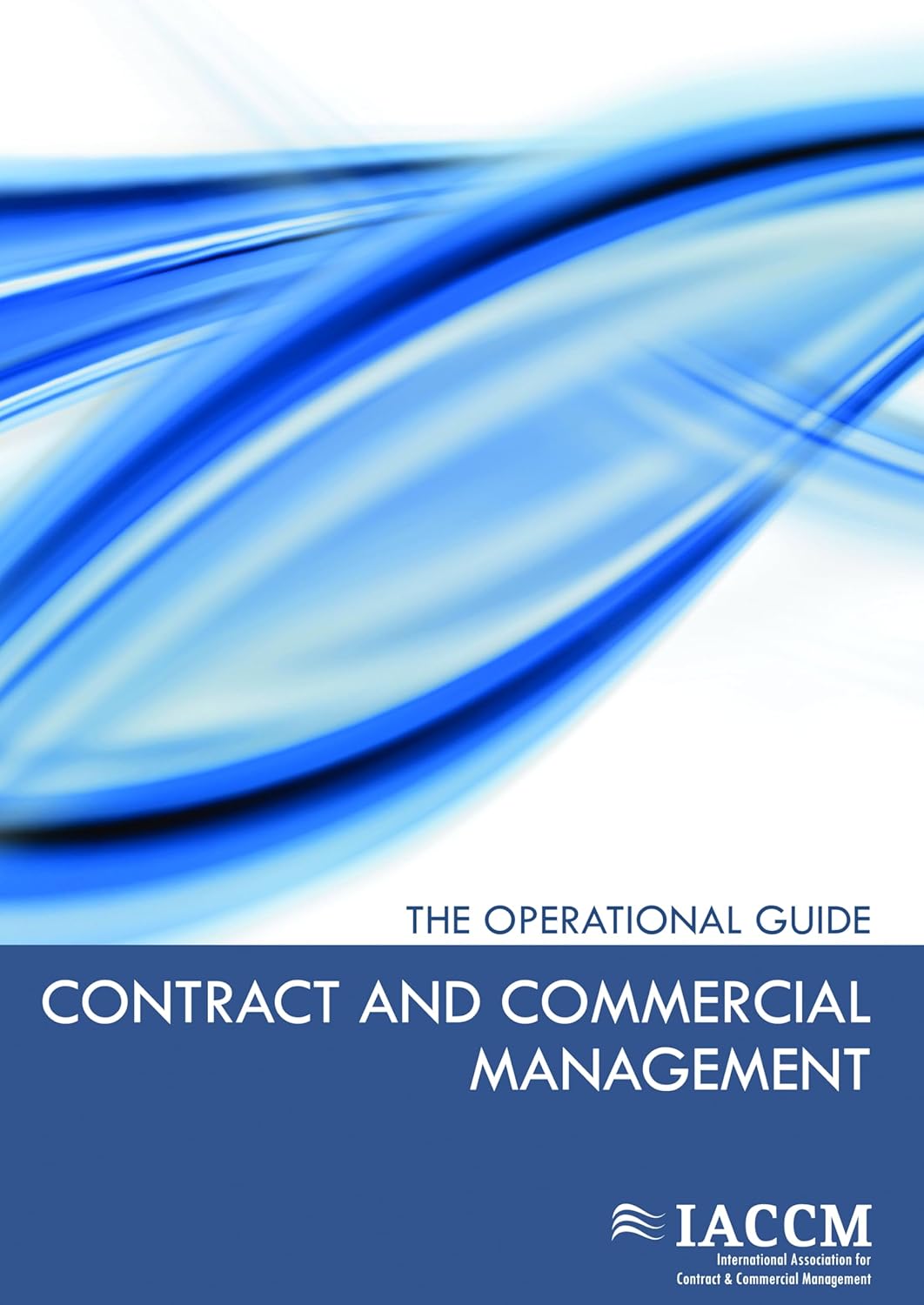
Almost 80% of CEOs say that their organization must get better at managing external relationships. According to The Economist, one of the major reasons why so many relationships end in disappointment is that most organizations 'are not very good at contracting'. This ground-breaking title from leading authority IACCM (International Association for Contract and Commercial Management) represents the collective wisdom and experience of Contract, Legal and Commercial experts from some of the world s leading companies to define how to partner for performance. This practical guidance is designed to support practitioners through the contract lifecycle and to give both supply and buy perspectives, leading to a more consistent approach and language that supports greater efficiency and effectiveness. Within the five phases described in this book (Initiate, Bid, Development, Negotiate and Manage), readers will find invaluable guidance on the whole lifecycle with insights to finance, law and negotiation, together with dispute resolution, change control and risk management. This title is the official IACCM operational guidance and fully supports and aligns with the course modules for Certification.
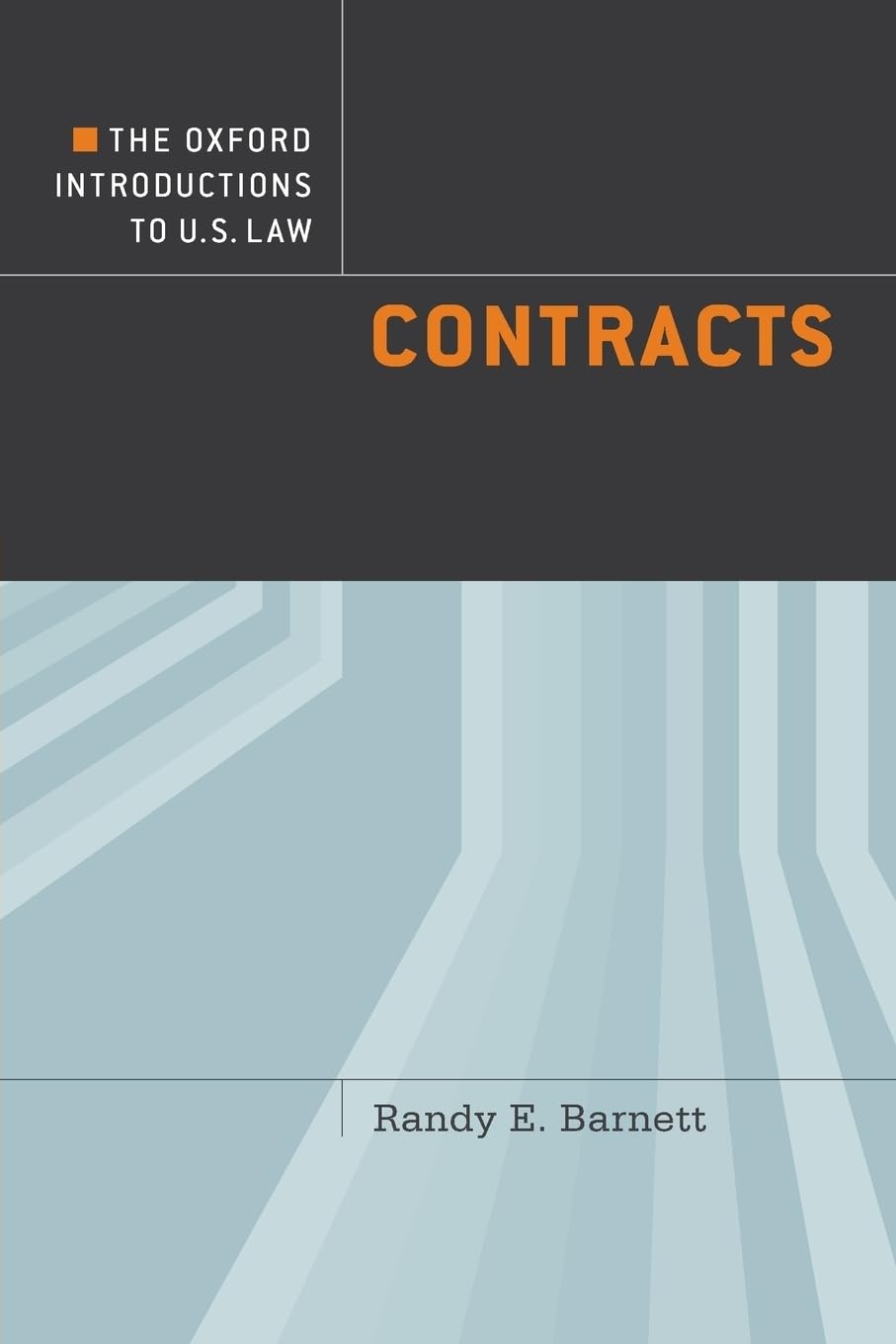
Written by a leading expert in the field, The Oxford Introductions to U.S. Law: Contracts provides students with ready access to the basic doctrines of contract law, the story behind their evolution, and the rationales for their continued existence. An engaging book that allows students to grasp the "big picture" of contract law, it is organized around the principle that lies at the heart of contracts: consent. Beginning with the premise of "consent," the book provides a cohesive framework in which to understand the various aspects of contract law.
Fraud Detection and Prevention
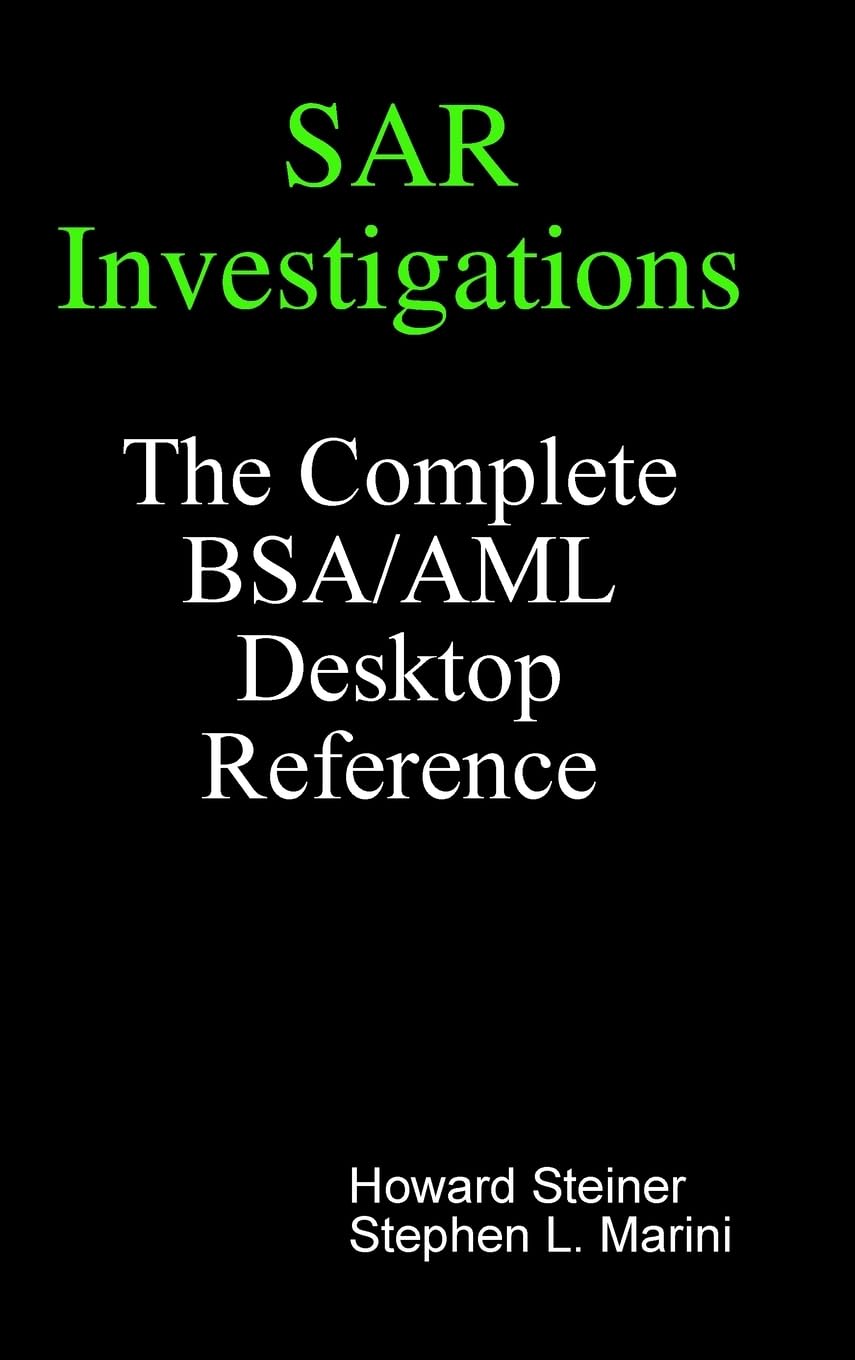
Finally there is a reference source that brings together all the available anti-money laundering and Bank Secrecy Act guidance and best practices for conducting suspicious activity report (SAR) investigations. This book offers a trove of information that will make your SAR process more efficient while simultaneously reducing compliance risk. The authors detail how to conduct suspicious activity investigations in a step-by-step manner and provide all the information you'll need to understand and identify a full range of financial crimes and schemes.
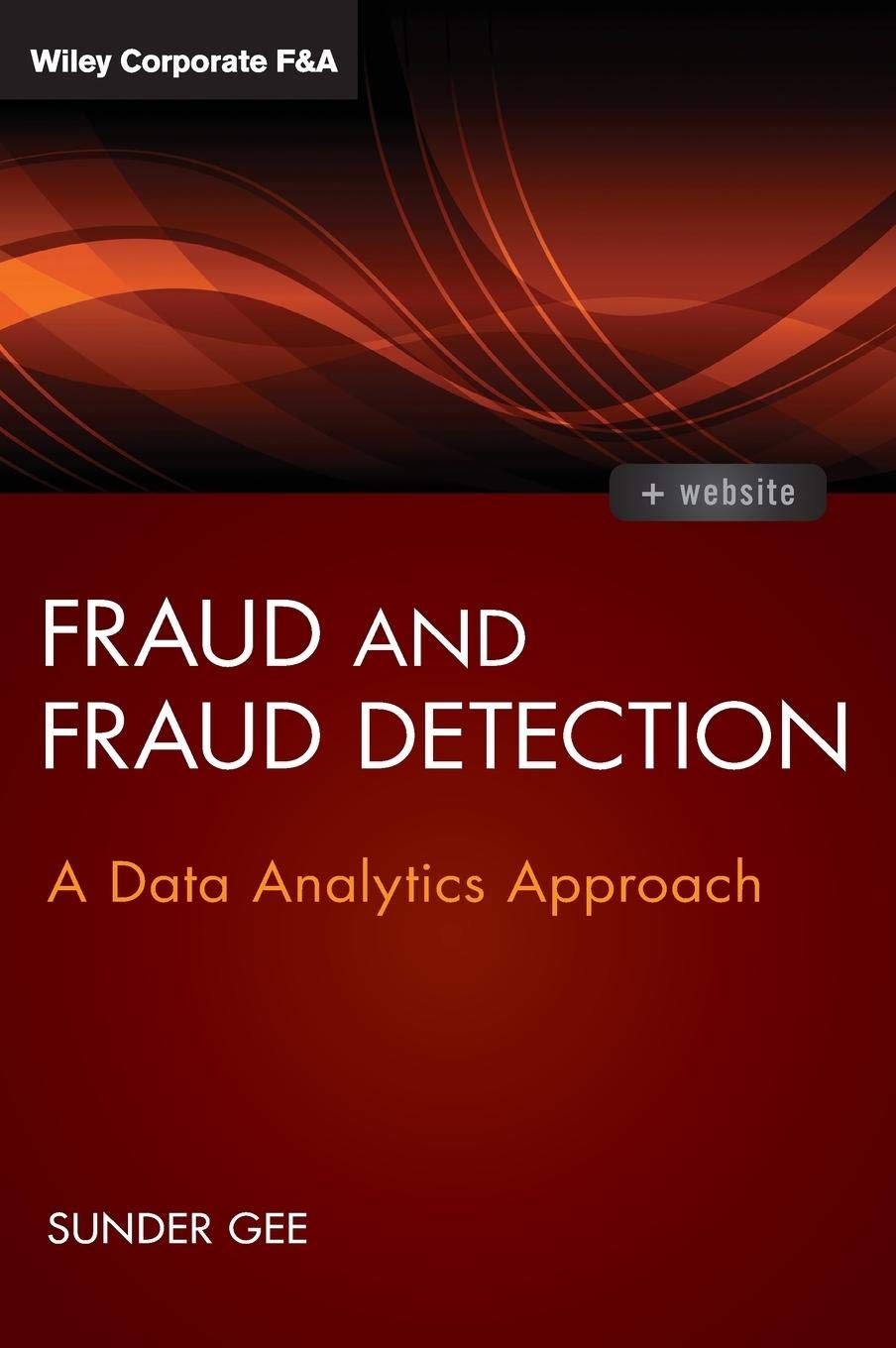
Detect fraud faster―no matter how well hidden―with IDEA automationFraud and Fraud Detection takes an advanced approach to fraud management, providing step-by-step guidance on automating detection and forensics using CaseWare's IDEA software. The book begins by reviewing the major types of fraud, then details the specific computerized tests that can detect them. Readers will learn to use complex data analysis techniques, including automation scripts, allowing easier and more sensitive detection of anomalies that require further review. The companion website provides access to a demo version of IDEA, along with sample scripts that allow readers to immediately test the procedures from the book.Business systems' electronic databases have grown tremendously with the rise of big data, and will continue to increase at significant rates. Fraudulent transactions are easily hidden in these enormous datasets, but Fraud and Fraud Detection helps readers gain the data analytics skills that can bring these anomalies to light. Step-by-step instruction and practical advice provide the specific abilities that will enhance the audit and investigation process. Readers will learn to:
- Understand the different areas of fraud and their specific detection methods
- Identify anomalies and risk areas using computerized techniques
- Develop a step-by-step plan for detecting fraud through data analytics
- Utilize IDEA software to automate detection and identification procedures
The delineation of detection techniques for each type of fraud makes this book a must-have for students and new fraud prevention professionals, and the step-by-step guidance to automation and complex analytics will prove useful for even experienced examiners. With datasets growing exponentially, increasing both the speed and sensitivity of detection helps fraud professionals stay ahead of the game. Fraud and Fraud Detection is a guide to more efficient, more effective fraud identification.
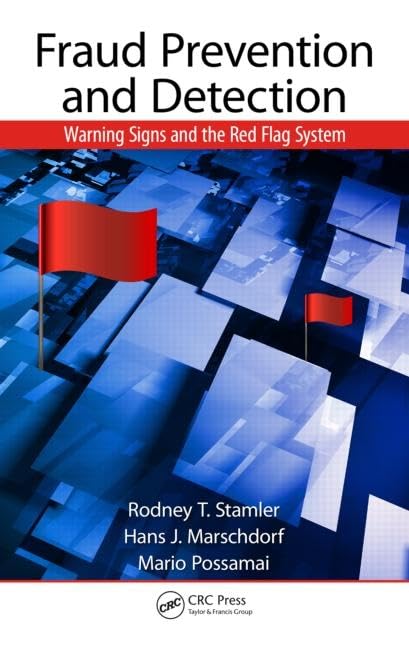
Lessons can be learned from major fraud cases. Whether the victim is a company, public agency, nonprofit, foundation, or charity, there is a high likelihood that many of these frauds could have been prevented or detected sooner if early Red Flag warning signs had been identified and acted upon. Fraud Prevention and Detection: Warning Signs and the Red Flag System will enable officers and directors, internal and external stakeholders, as well as outside analysts to protect themselves and their organizations against fraud by effectively detecting, analyzing, and acting on early Red Flag warning signs. Based on an empirically tested strategy, the Red Flag System reflects the authors’ more than 100 years combined experience in the investigation of fraud in high-profile, global cases in North America, Africa, Europe, and the Far East. Readers of this book will:
- Acquire a general awareness of the nature, characteristics, and dynamics of fraud
- Understand the process for determining whether a fraud has been committed
- Develop an understanding of enterprise risk management approaches for fraud risk management, compliance risk management, and managing the risk of fraudulent financial reporting―including an understanding of the limitations inherent in these approaches
- Learn how to find Red Flag indicators of fraud or suspicious transactions in financial statements, budgets, and contracts
- Know how to ensure that, once a Red Flag has been identified, appropriate action is taken
Fraud can lead to significant financial loss as well as bad press and publicity with significant reputational impact for officers, directors, corporations, and their stakeholders. This book’s no-nonsense approach empowers those charged with protecting organizations to stop these frauds before the organization’s livelihood is jeopardized or to mitigate damage when fraud has occurred.
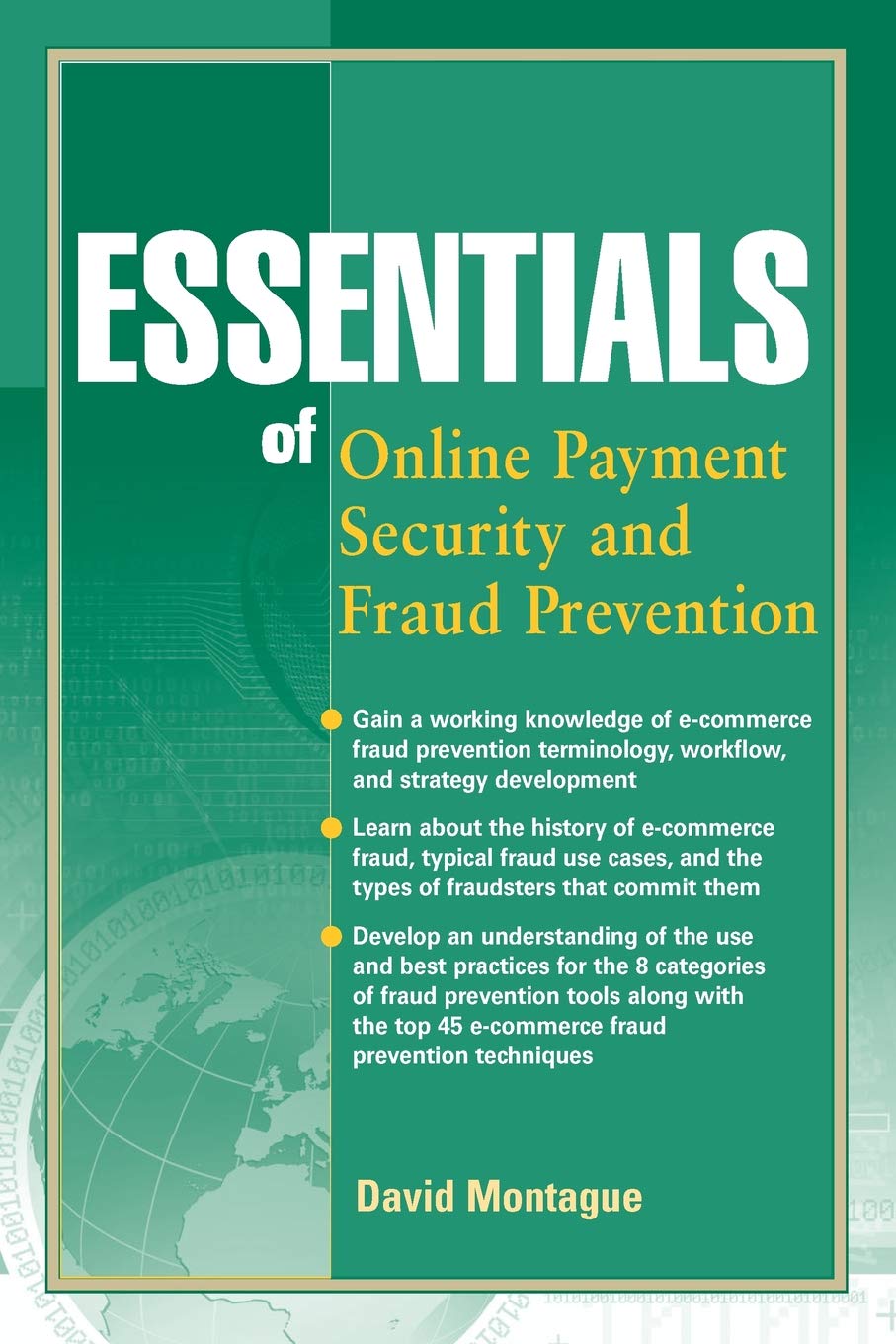
Essential guidance for preventing fraud in the card-not-present (CNP) spaceThis book focuses on the prevention of fraud for the card-not-present transaction. The payment process, fraud schemes, and fraud techniques will all focus on these types of transactions ahead.
- Reveals the top 45 fraud prevention techniques
- Uniquely focuses on eCommerce fraud essentials
- Provides the basic concepts around CNP payments and the ways fraud is perpetrated
If you do business online, you know fraud is a part of doing business. Essentials of On-line Payment Security and Fraud Prevention equips you to prevent fraud in the CNP space.
Mergers, Acquisitions, and Corporate Restructuring
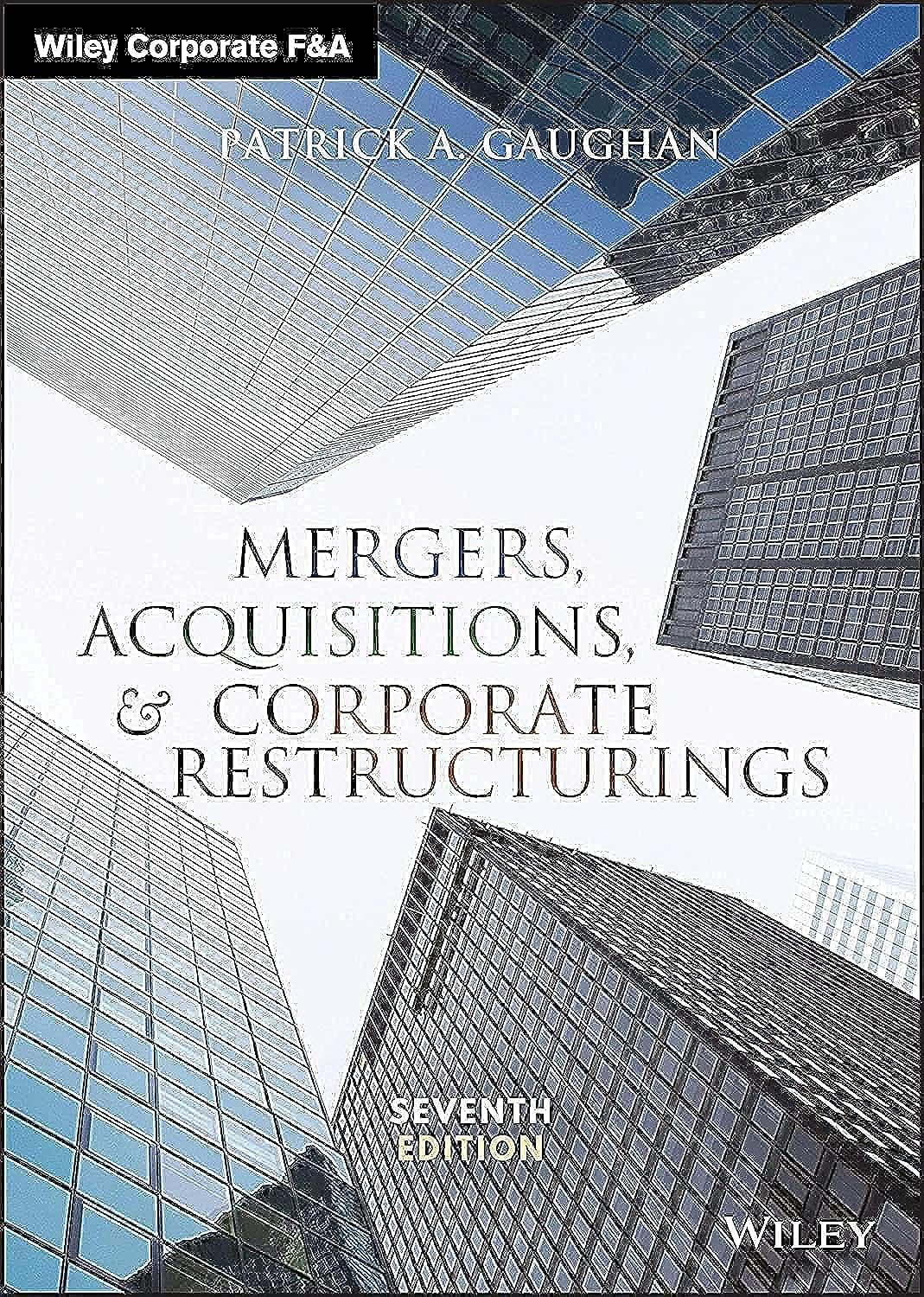
The essential M&A primer, updated with the latest research and statisticsMergers, Acquisitions, and Corporate Restructurings provides a comprehensive look at the field's growth and development, and places M&As in realistic context amidst changing trends, legislation, and global perspectives. All-inclusive coverage merges expert discussion with extensive graphs, research, and case studies to show how M&As can be used successfully, how each form works, and how they are governed by the laws of major countries. Strategies and motives are carefully analyzed alongside legalities each step of the way, and specific techniques are dissected to provide deep insight into real-world operations. This new seventh edition has been revised to improve clarity and approachability, and features the latest research and data to provide the most accurate assessment of the current M&A landscape. Ancillary materials include PowerPoint slides, a sample syllabus, and a test bank to facilitate training and streamline comprehension.As the global economy slows, merger and acquisition activity is expected to increase. This book provides an M&A primer for business executives and financial managers seeking a deeper understanding of how corporate restructuring can work for their companies.
- Understand the many forms of M&As, and the laws that govern them
- Learn the offensive and defensive techniques used during hostile acquisitions
- Delve into the strategies and motives that inspire M&As
- Access the latest data, research, and case studies on private equity, ethics, corporate governance, and more
From large megadeals to various forms of downsizing, a full range of restructuring practices are currently being used to revitalize and supercharge companies around the world. Mergers, Acquisitions, and Corporate Restructurings is an essential resource for executives needing to quickly get up to date to plan their own company's next moves.
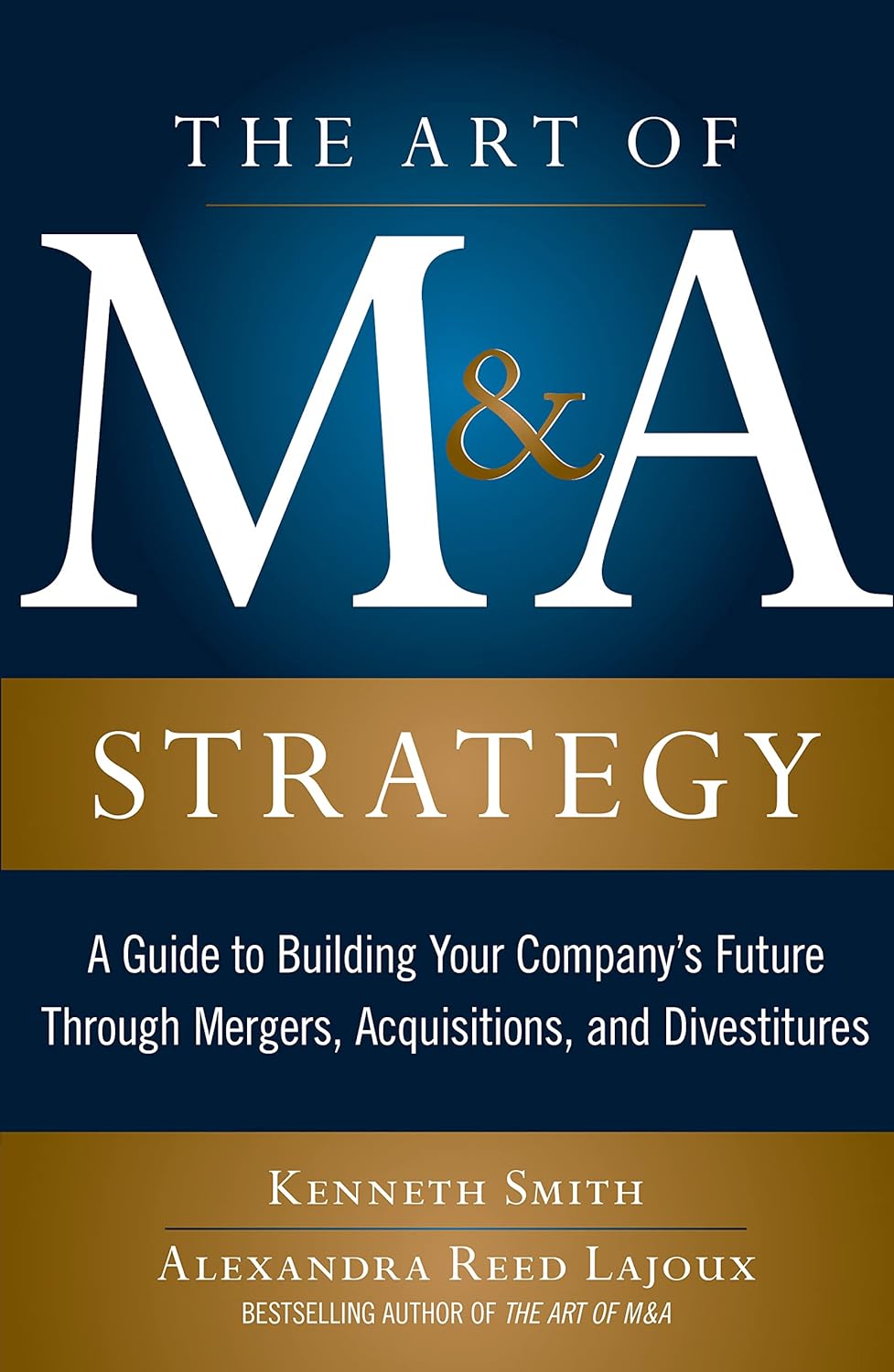
Seize the competitive advantage with today’s most powerful strategic tool―M&A“Given the influence of technology, globalization, and regulatory change, M&A will continue to shape our industries. For most companies, therefore, the consideration of M&A in strategy is now fundamental.” –from the Introduction to Part IThe Art of M&A Strategy is exactly what you need to build mergers, acquisitions, and divestitures into your overall business strategy―to make M&A a competitive advantage and avoid landing on the long list of M&A failures.Experts in the field of M&A, Smith and Lajoux demystify this otherwise complex subject by taking you through the types of M&A strategy and the key steps to successful M&A strategy development and implementation. The Art of M&A Strategy is conveniently organized into three sections:
- Part I presents a range of possible corporate strategy situations and provides the role and rationale for M&A in each, such as building and managing a portfolio, participating in industry consolidation, spurring corporate growth, and using acquisitions to create “real options.”
- Part II outlines how to determine the role of M&A in your strategy―taking into consideration industry context, competitive imperatives, and strategy options―and explains how to find and screen partners, decide whether to buy or sell, and engage the board of directors in M&A decisions.
- Part III covers M&A as a sustained corporate program, particularly in the context of international growth, outlining the most strategic aspects of post-merger integration, describing how to use advisors throughout the process, and examining core competencies required for successful M&A programs.The authors illuminate the purpose and process of applying M&A with real-world success stories involving Cisco, GE, Google, and many other companies that have leveraged M&A for strategic success. Use The Art of M&A Strategy to create a powerful strategy position for success in today’s changing business environment and to seize and hold competitive advantage.

Valuation is not just a critical step in buying or selling a company, it’s an instrumental tool for measuring and managing the successful growth of any business. If you are an advisor, investor, business owner, or board member, this comprehensive guide from the authors of the bestselling “Art of M&A” series provides the essential information you need to:
- Master the fundamentals of business valuation
- Understand the difference between price and value
- Analyze business potential using valuation multiples and DCF
- Avoid the pitfalls of valuation “rules of thumb”
- Use contingent consideration to bridge value expectations
- Unlock value using tax structure
- Build a transaction model that evaluates multiple forecast scenarios
- Know when to buy and sell―and succeed
Regardless of a company’s particular industry, financial condition, or stage of development, this book arms you with a full range of valuation methods and downloadable finance models suitable to any situation. You’ll gain not only a rigorous understanding of quantitative financial models, but also the qualitative drivers that make a business more valuable in the eyes of a buyer. Unlike most other M&A texts, the Art of M&A Valuation and Modeling also explains how to enhance valuation using deal techniques learned only through the authors’ decades of hands on, practical experience.As an added bonus, the book features sample models and real-world examples so you can see the valuation process in action. This practical guide makes it easy for you to chart the course of your own company’s growth, diversification, progress, efficiency, synergy, and more. For what it’s worth, The Art of M&A Valuation and Modeling could be the best investment you’ll ever make.
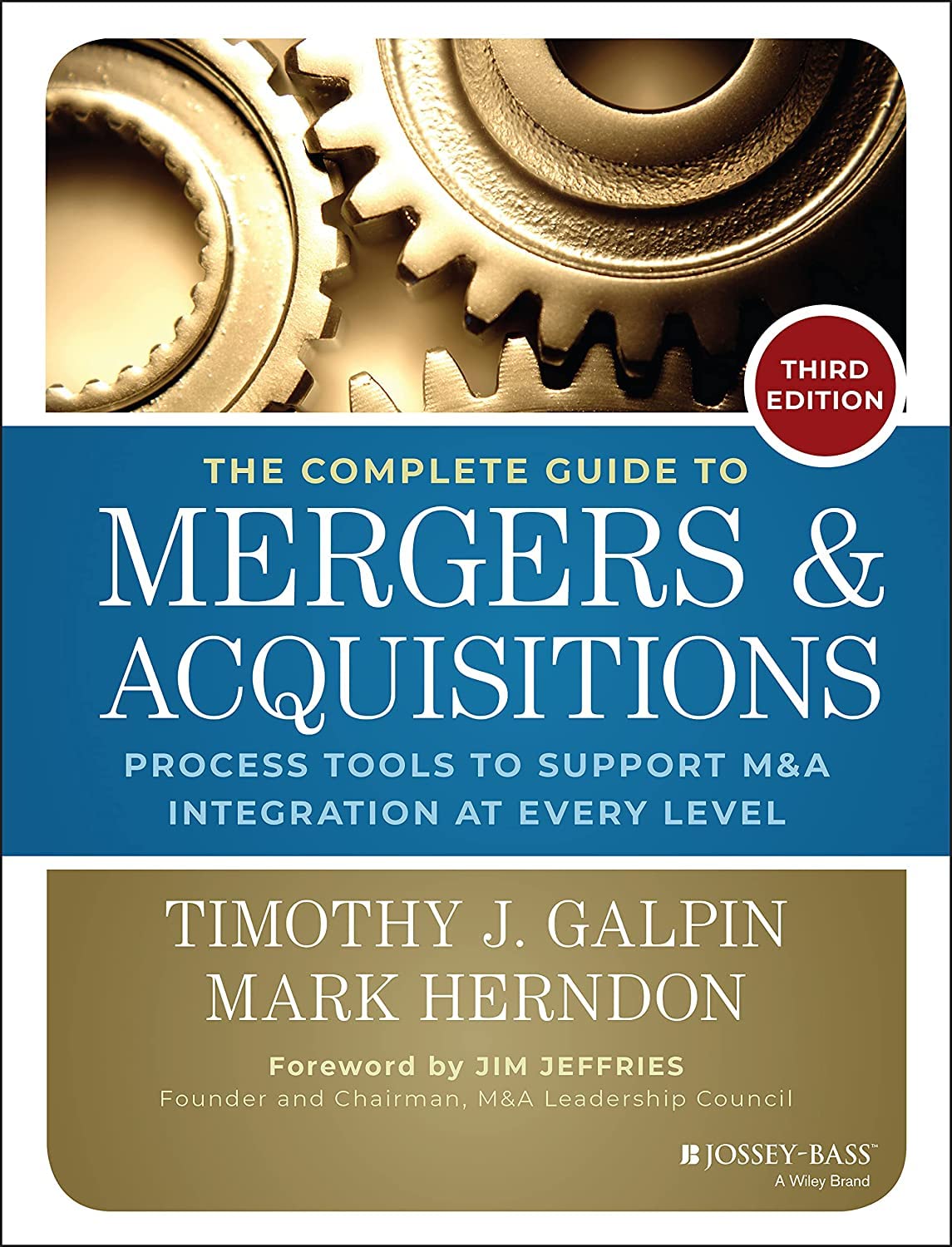
Ease the M&A process with a more effective integration planThe Complete Guide to Mergers and Acquisitions is the ultimate handbook for planning and managing post-merger integration. Packed full of "how to" guidance, tools, templates and resources that have been put to the test on numerous due diligence and integration efforts around the world, The Complete Guide to Mergers and Acquisitions has been the go-to guide for firms seeking to maximize the value of their deals since the release of the first edition in 1999.Poor integration management virtually ensures that a merger or acquisition will fail to meet financial and strategic goals. The Complete Guide to Mergers and Acquisitions provides the information that enables firms to quickly and prudently capture projected cost and revenue synergies, and to move the combined organization forward. The book addresses strategic deal considerations, due diligence, integration management, people dynamics and cultural integration, common integration mistakes, communications strategies, and provides actionable steps toward creating measurable, positive results throughout the integration process. The updated third edition contains new information and tools to help firms in any industry manage deals of all sizes, including:
- Results of The State of M&A Integration Effectiveness Survey, 2014
- A new chapter on the M&A process deal stages, with an expanded Deal Flow Model
- Findings of substantial M&A research from various studies in multiple industries and organizations, supporting the concepts presented throughout the book
- New and revised tools and templates for due diligence, integration, and results measurement and reporting
- New case examples of recent transactions
- Highlighted 'Key Principles' throughout each chapter
- A summary of key points at the end of each chapter
- Discussion questions addressing the key themes of each chapter
- A 'rapid assessment' diagnostic regarding the key elements of each chapter, which can be completed for any organization
- A revised chapter on taking your M&A game to the next level – essential requirements for building M&A capabilities into a consistently successful enterprise competency
Merger and acquisition activity across the globe continues to grow, and is also playing a major role in the development of expanding markets. A well-managed integration effort is essential to success, and failure means a tremendous waste in terms of time and money, as well as the rapid destruction of shareholder value. The Complete Guide to Mergers and Acquisitions: Process Tools to Support M&A Integration at Every Level, Third Edition is an invaluable resource to guide firms in managing M&A integration and maximize the value of their deals.
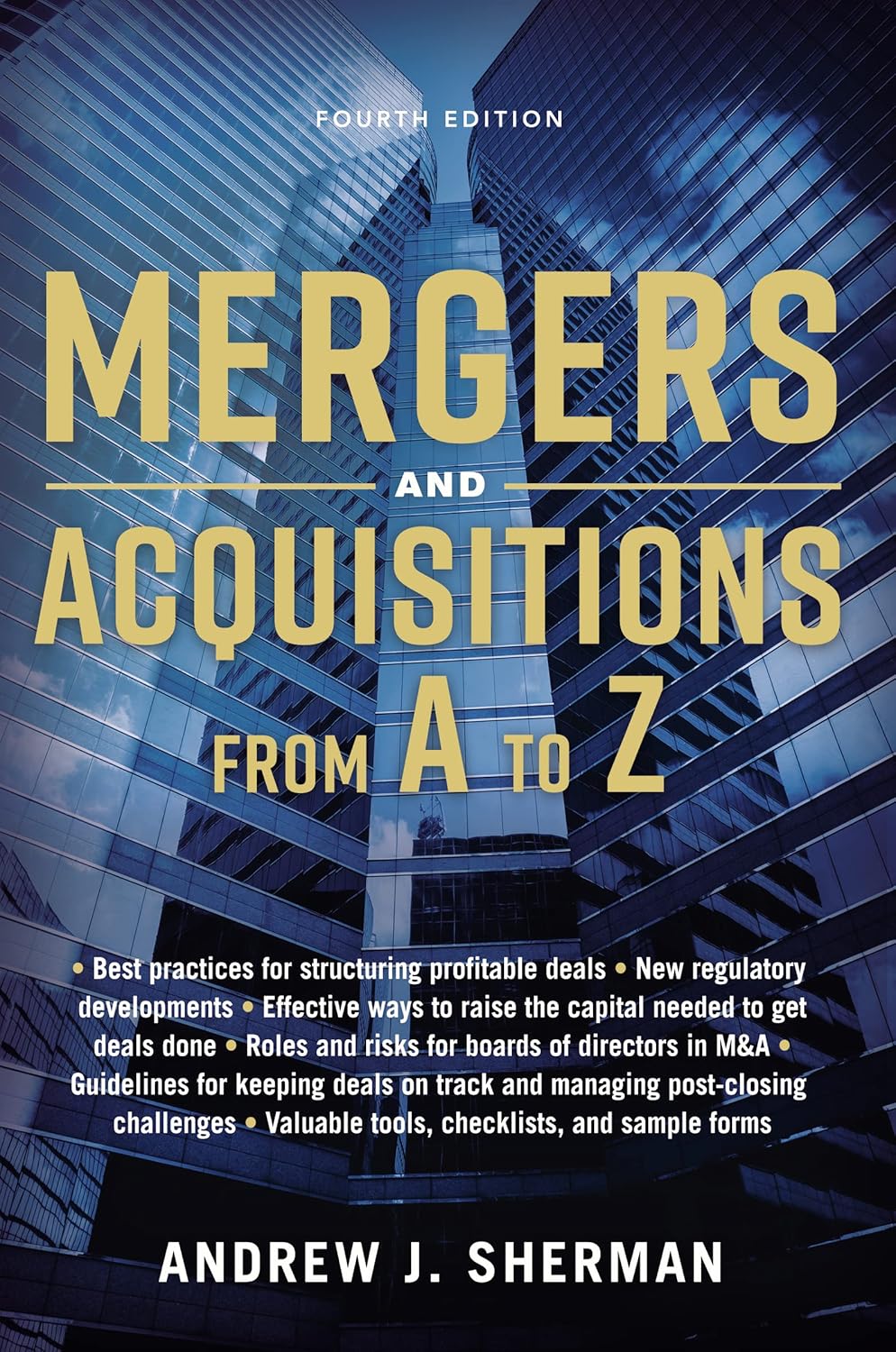
Walks you through every step of the process—from valuation to securities laws to closing and successful integration.When done correctly and cautiously, your company's next merger or acquisition should be an exciting, profitable time. But these complex transactions carry significant risk, no matter how simple or appealing they may look on the outside.Complete with expert advice, case studies, checklists, and sample documents, this fully updated edition of Mergers and Acquisitions from A to Z is your complete guide to help you be prepared and take steps to eliminate rivals, extend territory, and diversify offerings.It includes:
- The latest trends and regulatory developments.
- Best practices for structuring profitable deals.
- Effective ways to raise the capital needed to get deals done.
- Roles and risks for boards of directors in M&A.
- Guidelines for keeping deals on track and managing post-closing challenges.
- Valuable tools, checklists, and sample forms.
It is absolutely vital for all involved in the deal to make sure they are guarding themselves against costly mistakes that have been the downfall for many leaders and organizations before them.The fourth edition of Mergers and Acquisitions from A to Z further explains how to conduct due diligence, calculate the purchase price, understand the roles and risks for boards, and more. Don't make another deal without this trusted resource and its strategic and legal guidance by your side.
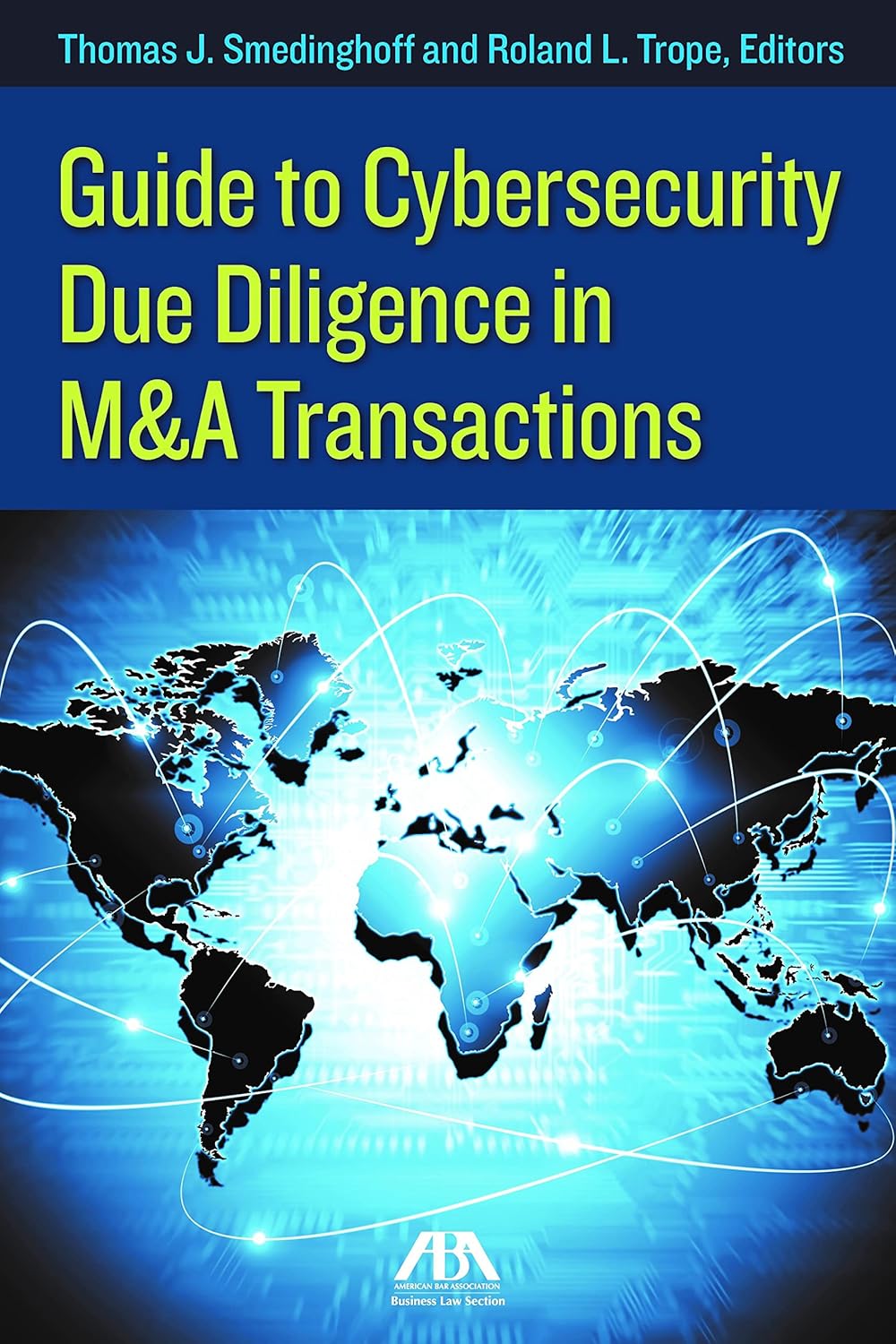
“Almost all acquisitions involve Intellectual Property assets and Internet/IT considerations. This desktop reference helps the acquirer determine whether they are buying a valuable asset or a potentially uncapped liability. Insightful and useful, this volume also helps frame the post-acquisition interconnection of cyber assets. It is an excellent companion piece to the ABA Cybersecurity Handbook, and other invaluable ABA publications and CLE programming.” ―Vincent Polley, Co-Chair, ABA Cybersecurity Legal Task ForceIn the Digital Era, ubiquitous connectivity has spared no enterprise the risks of being hacked from anywhere in the world. Whether the intruder’s purpose is to steal, change, or destroy information, or to use its unauthorized access to harm and disrupt the enterprise’s operations, the attackers have continued to increase their advantage over the defenders. Virtually all enterprises have been breached and their sensitive information compromised.The reality of this threat, coupled with the near total dependence of today’s businesses on networked digital technology, presents a major risk of catastrophic consequences to most businesses. And acquiring or merging with any business involves taking on that risk. Thus, in any M&A transaction, an evaluation of the target’s cybersecurity capabilities and experience is critical. This comprehensive and valuable guide, Guide to Cybersecurity Due Diligence in M&A Transactions is designed to assist companies and their counsel in assessing that risk. Beginning with an introduction to the importance of cybersecurity due diligence, the Guide explains to M&A counsel and their clients the key requirements of the cybersecurity due diligence process that should be part of every M&A transaction.This Guide can be read cover-to-cover, or used when counsel or clients want to get up to speed on specific issues, such as:
- The importance of cybersecurity due diligence for an M&A deal
- Lessons from recent cyber incidents including Nieman Marcus, Yahoo, Target Corporation, Sony Pictures, and Volkswagen
- Identifying a target’s high-value digital assets
- Evaluating incident response capabilities, supply chain risks, or assessment of a target’s resilience
- And much more!
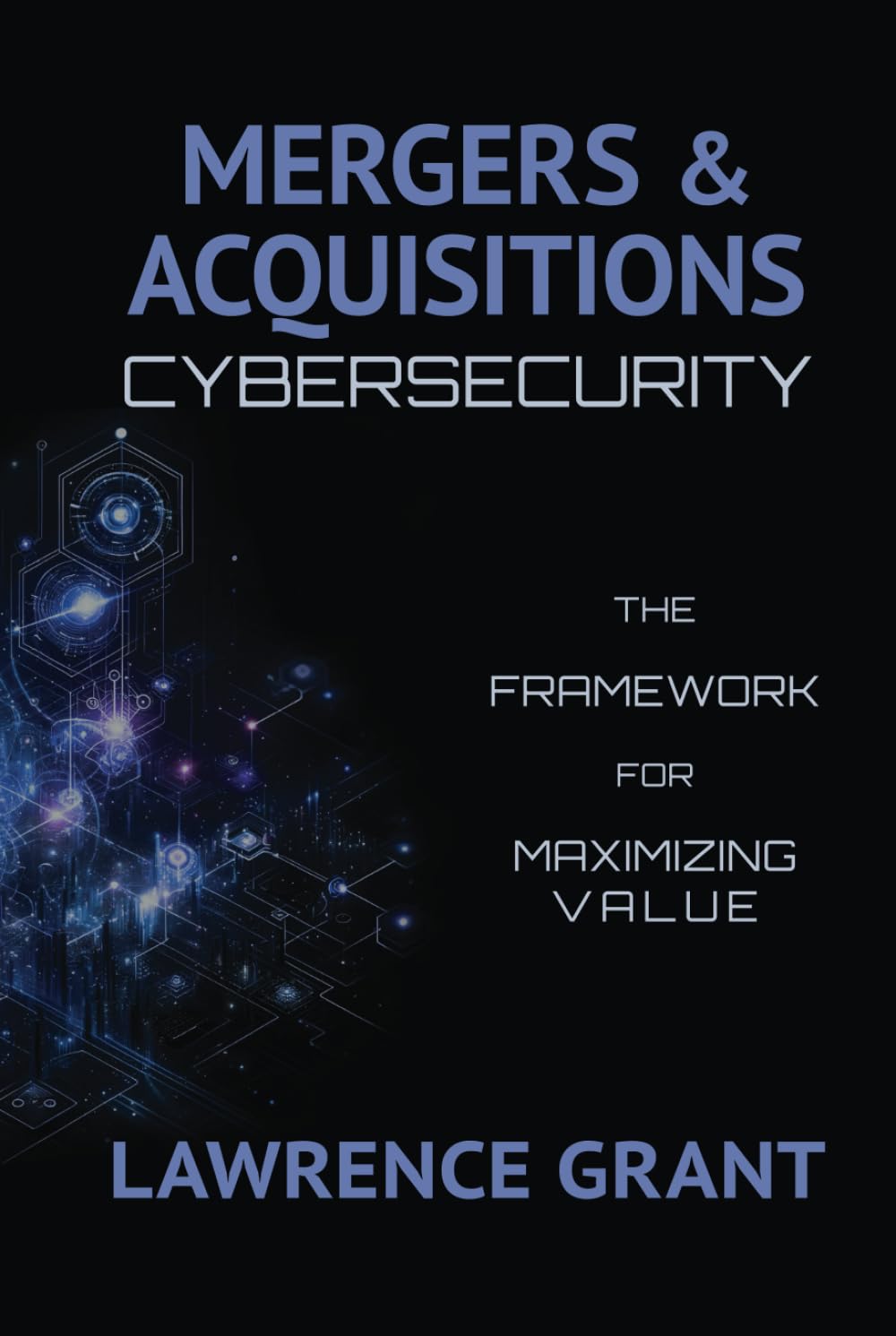
Is Cybersecurity a Threat to the Value of Your M&A Transaction? As seen on 'Best 5 Books on Mergers & Acquisitions' by FiveBooks.com!Written by Lawrence Grant, Harvard graduate, experienced business advisor, investor, and former Chief Information Security Officer.Buyers and sellers can lose millions during mergers & acquisitions because of cybersecurity lapses.In 2016 during its merger with Verizon, Yahoo reported improperly resolved previous cyber incidents, which resulted in a $350 million reduction in the acquisition price, tarnished its reputation, and led to legal action. The repercussions of this mistake were significant.And yet, instances like this continue to occur. Lawrence Grant introduces a cybersecurity framework in ‘Mergers & Acquisitions Cybersecurity’, drawing from his experience advising middle market and Fortune 100 companies through mergers & acquisitions.Here, you will find the only book that offers a cybersecurity framework that prevents the mistakes which unravel deals and tank valuations.In this book, you’ll learn:
- Real Case Studies: Gain insights into the incidents that cost companies like Yahoo and Marriott millions of dollars in deal value and the specific strategies you can use to protect against financial loss, reputational harm and legal liabilities before, during, and after your M&A transaction.
- Deal Threats & Impacts: Recognize cybersecurity threats that can cause significant loss of deal value and how to mitigate and protect against their impacts.
- M&A Cybersecurity Framework: Lawrence introduces a practical framework for buyers and sellers that includes strategies for identifying, categorizing, quantifying and mitigating M&A transaction cybersecurity risk and a methodology for assessing and calculating any upfront and residual financial costs that may impact the transaction.
- Transaction Cyber Protection: Deep insights and strategies to protect the value of M&A transactions — from before the initial deal engagement through to deal closure, company integration and asset transfer. Owners, investors and all professionals involved in the buying, selling or merging of companies will find this book indispensable for overcoming the challenges posed by cybersecurity.
By adopting the principles shared in Lawrence’s cybersecurity framework; you’ll effectively minimize risks, protect company value and secure transactions.
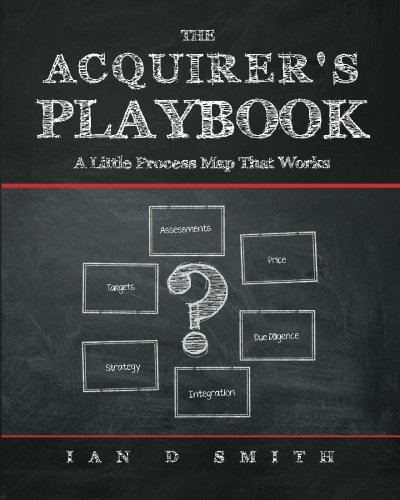
Acquisitions can quantum leap growth. Acquisitions allow a transformation of scale. They can accelerate the execution of a great strategy, but they require a process to ensure success. The Acquirer’s Playbook is the narrative detailing how to execute a better process map, a better playbook. That process map is called The Acquisitions Approvals Model. It is a detailed process map in six simple phases with 25 sequential stages, which you can embed in your business. It takes a complex transaction and simplifies it into actions you can execute.This little book will change the way you buy companies. It will force your post-acquisition integration plan to the top of the agenda. It will significantly change the odds of successfully completing the right deals at the right price and integrating them seamlessly.
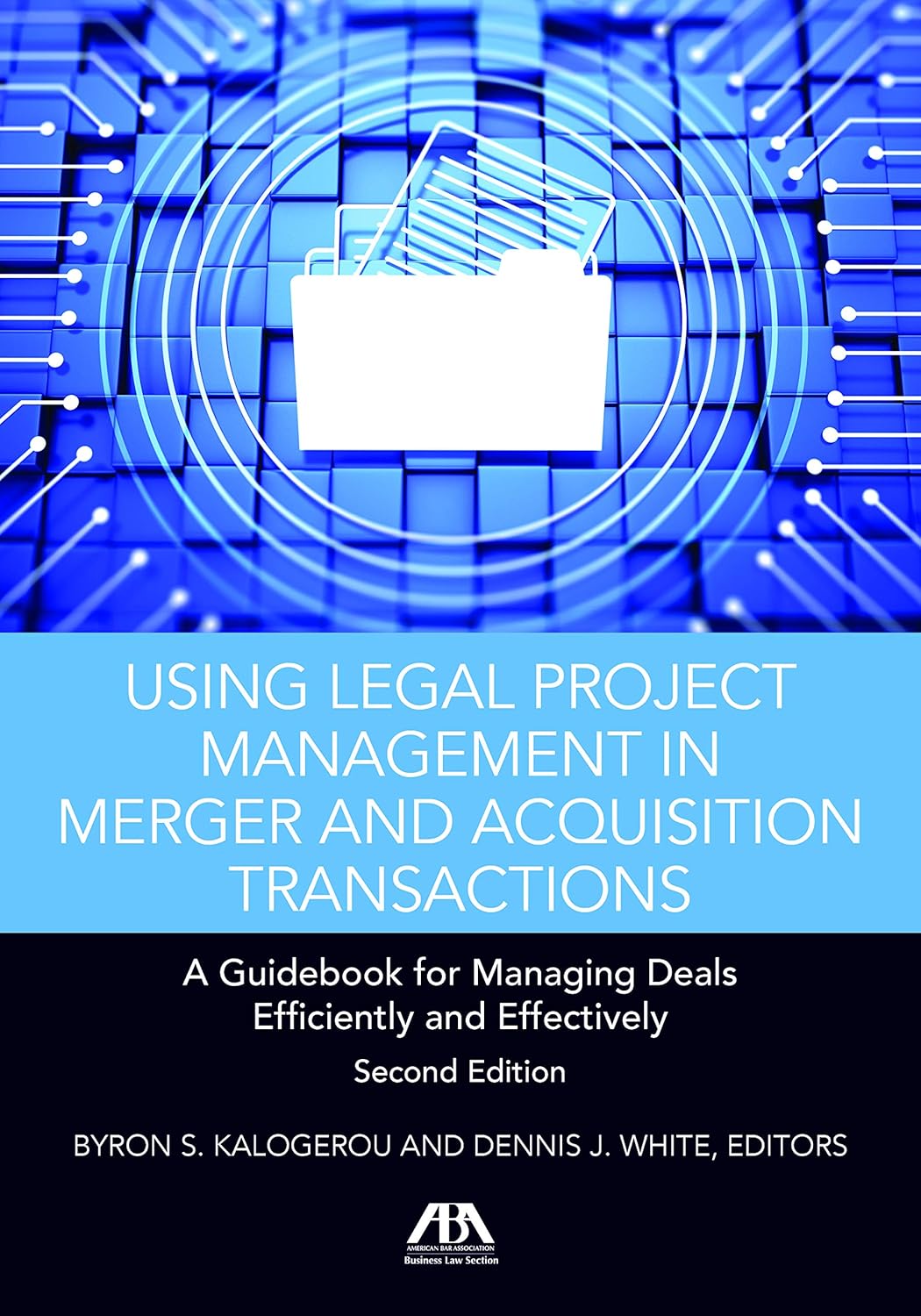
In its second edition, this guidebook is intended to serve as a resource and toolbox for deal lawyers who seek to more effectively plan, manage, and execute M&A transactions. Written by seasoned M&A practitioners, this valuable guide will help you work faster and smarter, meeting the demands of increasingly sophisticated clients and keeping pace with today's dynamic legal marketplace. As a practical resource, this guide contains essential tools that deal lawyers can consult, customize, and adapt as they effectively scope, plan, manage, and execute M&A transactions. Deal velocity continues to accelerate due to advances in technology, instant communication and virtual due diligence and closings. To respond to this velocity in the deal cycle and increasing demands for predictability of legal costs in transactional matters, this resource provides you with tools to help meet such demands, without overlooking important matters or otherwise compromising the quality of legal service you provide.Organized by three deal phases, namely “PreDeal,” “Deal,” and “Post-Closing,” and by user, be it the client, the law firm, or the opposing counsel, this guidebook includes:
- A menu of alternative fee arrangements for M&A deals, tools for conducting post matter assessments and a set of suggested M&A billing codes
- Valuable guidance on using legal practice management in your firm to increase organizational and communications framework that enables law firms and in-house counsel to better plan, manage, and execute M&A transactions
- A companion website available to purchasers to keep you updated on this evolving area of the M&A law practice
- Downloadable checklists, forms and tools, including two billing tools, you can customize to implement legal project management in your M&A practice
This Second Edition expands on the First Edition and includes five new tools:
- Multi-Jurisdictional Transaction Checklist (Pre-Deal Document No. 8)
- Carveout Transaction Checklist (Pre-Deal Document No. 9)
- Post-Acquisition Integration Checklist (Post-Closing Document No. 2)
- M&A Deal Magnitude and Complexity Tool (Billing/Budgeting Document No. 3); and
- Budgeting Tool (Billing/Budgeting Document No. 4)
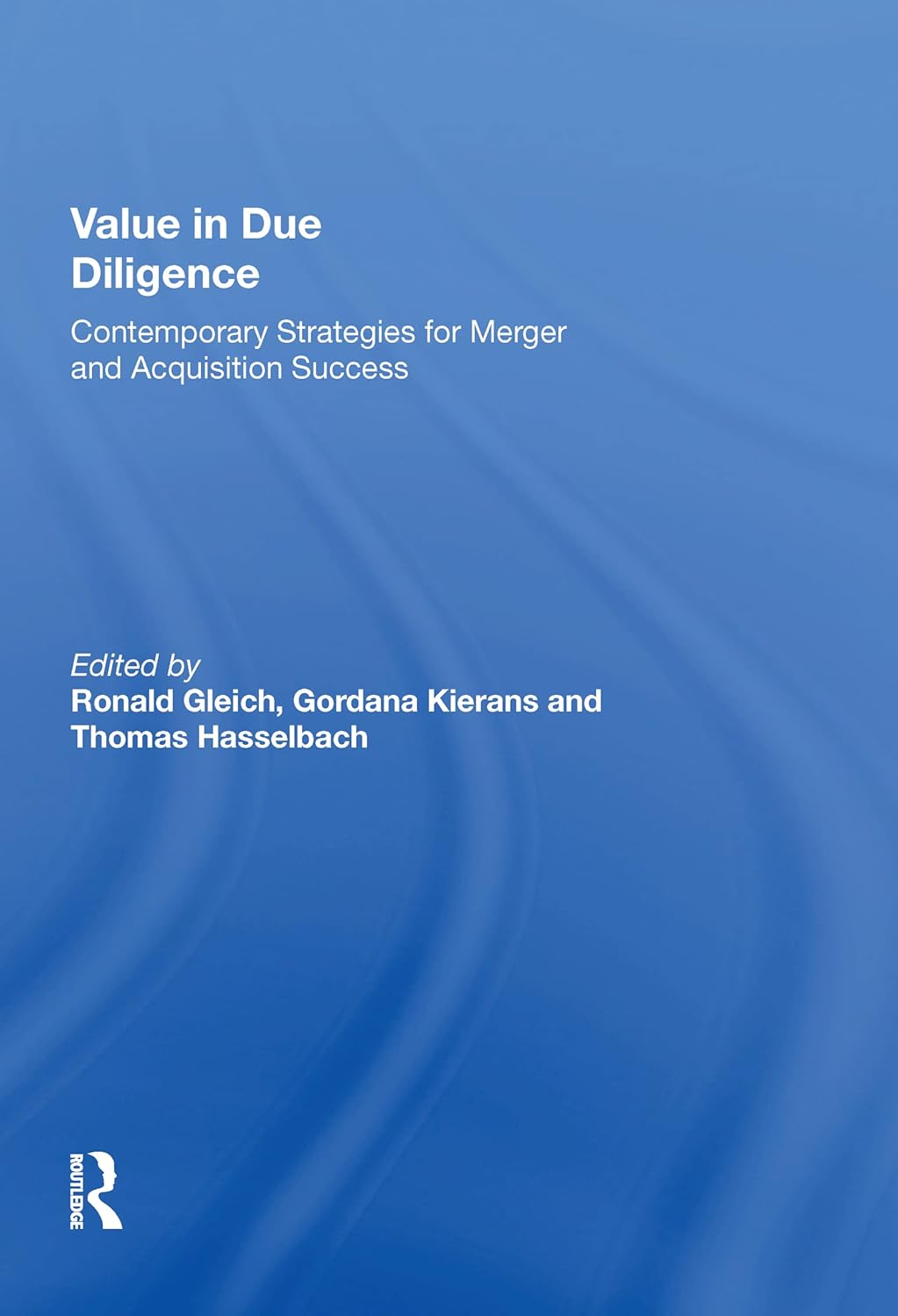
The recent financial crisis has thrown many of the mergers and acquisitions of recent years into sharp focus. Too many have failed to generate real value for shareholders and many others have only proved lukewarm successes. Although it is impossible to assess accurately the extent to which these failures may be the result of poor planning and execution, they have raised considerable questions about the process, breadth and effectiveness of traditional due diligence activities. Value in Due Diligence explores new applications for due diligence including areas such as corporate culture, social responsibility, and innovation. It also examines the due diligence process itself to draw out those elements that provide effective risk and opportunity management as opposed to simple compliance.
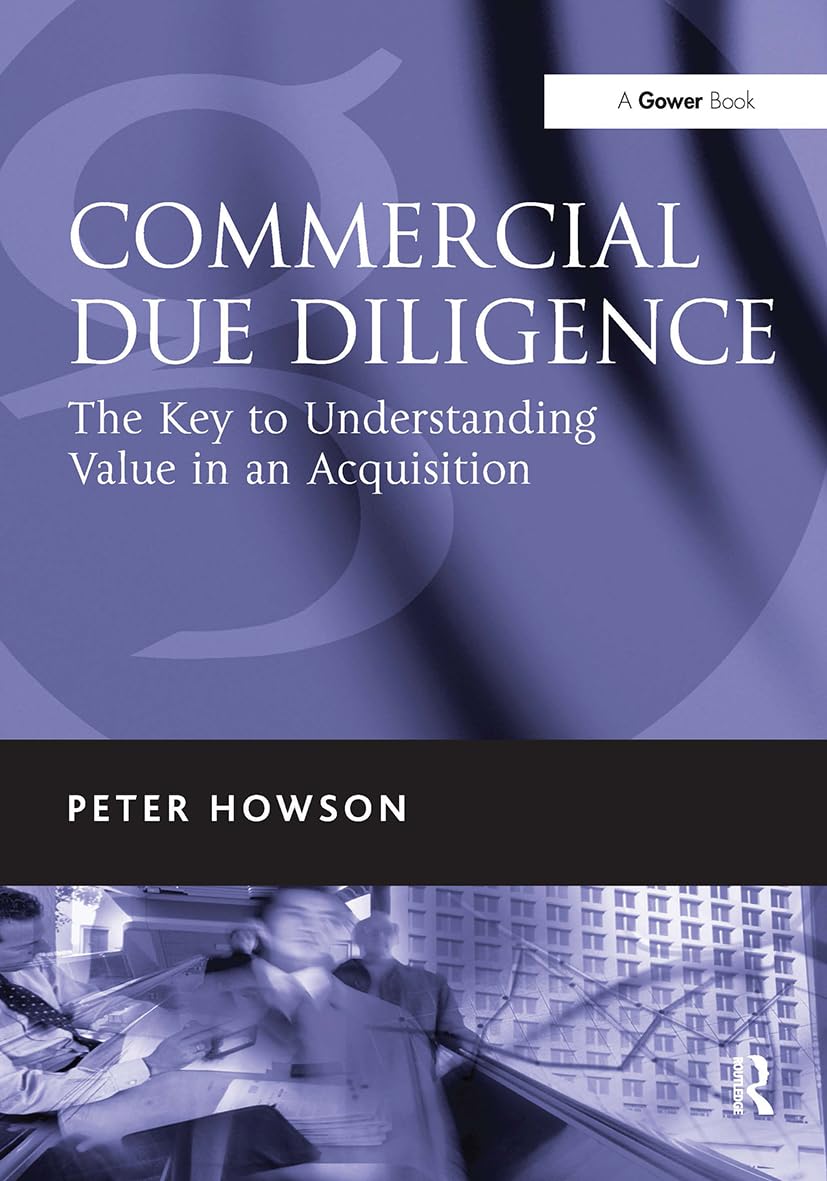
Commercial Due Diligence (CDD) is about telling the difference between superior businesses and poor businesses, which is why this book is a mixture of business strategy, marketing analysis and market research. However CDD is not about the bland application of analytical techniques, it's about understanding how businesses and markets work and what is really important for profits and growth. Commercial Due Diligence is written by someone with over 25 years' experience of practical strategic analysis who nonetheless has a strong academic grounding. For the first time here is a book that deals with the essentials of strategic analysis with the practitioner's eye. If you are in the business of formulating company strategy, and you want to see how to apply the theories and understand in practical terms what works, when, and what can go wrong, this is the book for you.
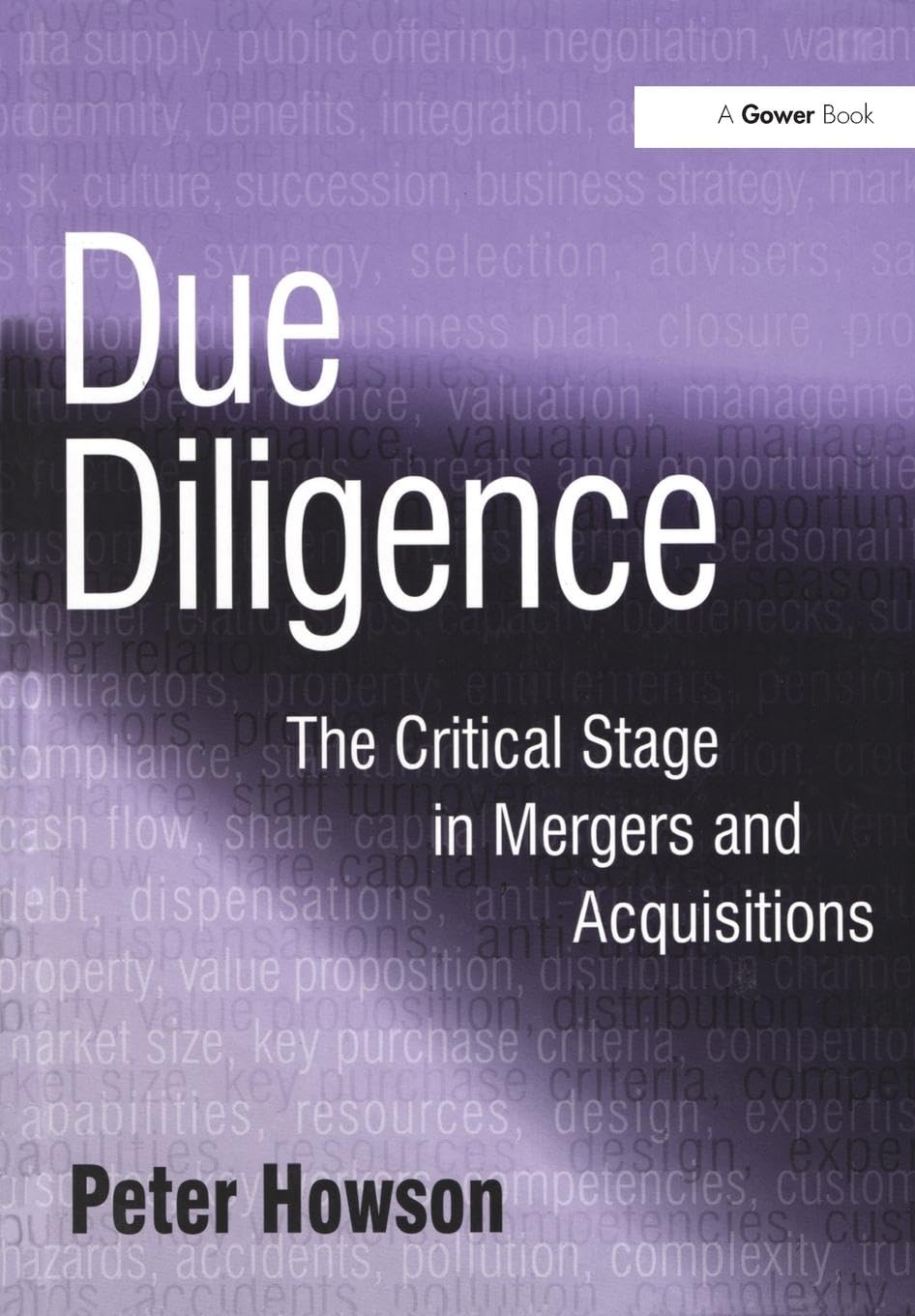
How can you be sure you are buying the company you think you are? Are you sure it is as good as the seller says? How can you be certain unexpected costs and obligations will not suddenly appear once you are the owner and responsible for them? How best can you arm yourself for the negotiations? Have you worked out precisely what you are going to do with it once it is yours? How do you set the priorities for change to recoup the premium you have paid for it? The answer to all these questions, and many more, lies with effective due diligence. Due diligence is one of the most important but least well understood aspects of the acquisition process. It is not, as many believe, a chore to be left to the accountants and lawyers. To get the best from it, due diligence has to be properly planned and professionally managed. This book is a comprehensive manual on getting due diligence right. It is a uniquely comprehensive guide, covering all aspects of the process from financial, legal and commercial due diligence right through to environmental and intellectual property due diligence. There are also useful chapters on working with advisers and managing due diligence projects. It also includes a number of checklists to help ensure that the right questions are asked.
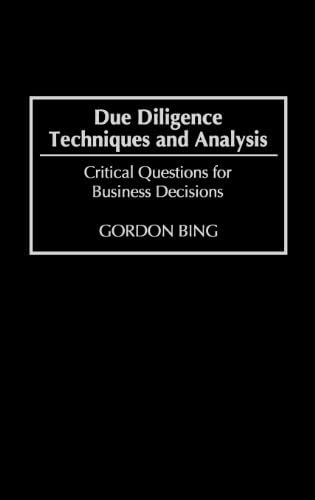
For buyers of a business or anyone involved in any phase of the due diligence process, Gordon Bing provides a unique, comprehensive, one-volume source of information and guidance. His book will help investors research, evaluate, and understand an existing or proposed business not only from a financial standpoint, but also from equally important nonfinancial standpoints. It provides a full explanation of the due diligence process, including systematic methods to determine the information you need, why you need it, and how to get it. Keyed to each topic, chapter by chapter, is a full list of specific questions that should be asked during due diligence proceedings to be studied beforehand and carried with you as a valuable on-the-spot reference. A unique, practical resource for professionals and a hands-on text for students in business schools and upper division undergraduate courses in mergers and acquisitions.
Chapters 1 and 2 discuss how to plan, organize, and conduct due diligence. In Chapter 3, Bing shows how to construct a list of the information and documents you will need. Chapter 4, by M&A attorneys James W. Ryan and Robert C. Beasley, deals with the legal aspects, responsibilities, and perils of performing or failing to perform due diligence. From there the book focuses on specific areas of due diligence inquiry―including management, marketing, human resource and other important functions―and helps you develop your own tailor-made investigation best suited to the company you are studying. The book concludes with a unique checklist of all the questions explained earlier―a manual you can study beforehand and then carry with you into meetings on site.
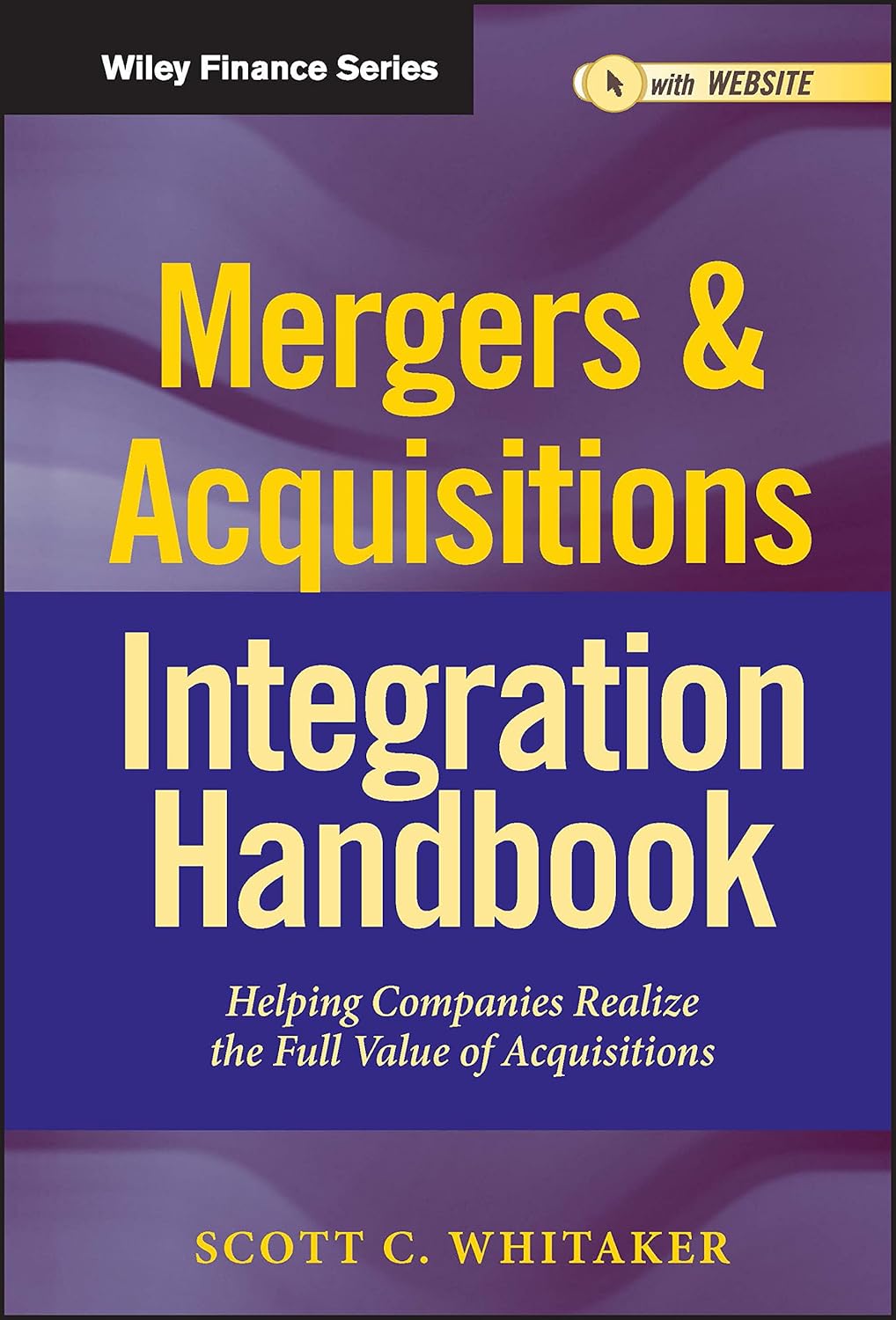
Proven strategies and tactics to manage the integration of acquired and/or merged companiesMergers & Acquisitions Integration Handbook is a comprehensive resource to help companies create a scalable post merger or acquisition integration process and framework that accelerates operating and business benefit goal realization.
- Includes tools, templates, forms, examples and checklists to provide a no nonsense “handbook” style approach to managing an effective integration.
- Helps integration managers quickly get up to speed on various integration challenges, including guidance on developing detailed operational and functional integration plans to support flawless execution.
- Reveals how to avoid integration failure by establishing an in-house integration management office to handle integration projects.
- Includes a sample integration playbook that can be used to create a core competency within companies to support ongoing integration activity.
Botched integration is the number one reason mergers fail. Mergers & Acquisitions Integration Handbook shows you how to develop, execute and implement merger integrations and business strategies to realize your organization's mergers and acquisitions goals.
As a working cybersecurity professional, every attempt is made to separate professional and personal endeavors in a manner consistent with reducing conflicts of interest and maintaining ethics. Statements contained within this site are the explicit and implicit goals, objectives, endorsements, and educated opinion of the author of this site and not those of current or former employers.

